- Silk Road 8: Khunjerab Pass to Passu, Hunza, Pakistan
- Silk Road 9: Karakorum Highway; Karimabad, Pakistan
- Silk Road 10: Gilgit to Skardu, Pakistan
- Silk Road 11 : Skardu; and Khaplu Fort, Pakistan
- Silk Road 12 : Onto Shigar Fort and onwards
- Silk Road 13 : Giglit to Islamabad via Kohistan
- Final Silk Road Episode: Islamabad and Lahore
Started early from Gilgit (Serena) after a nice breakfast (usually included in hotel room price).
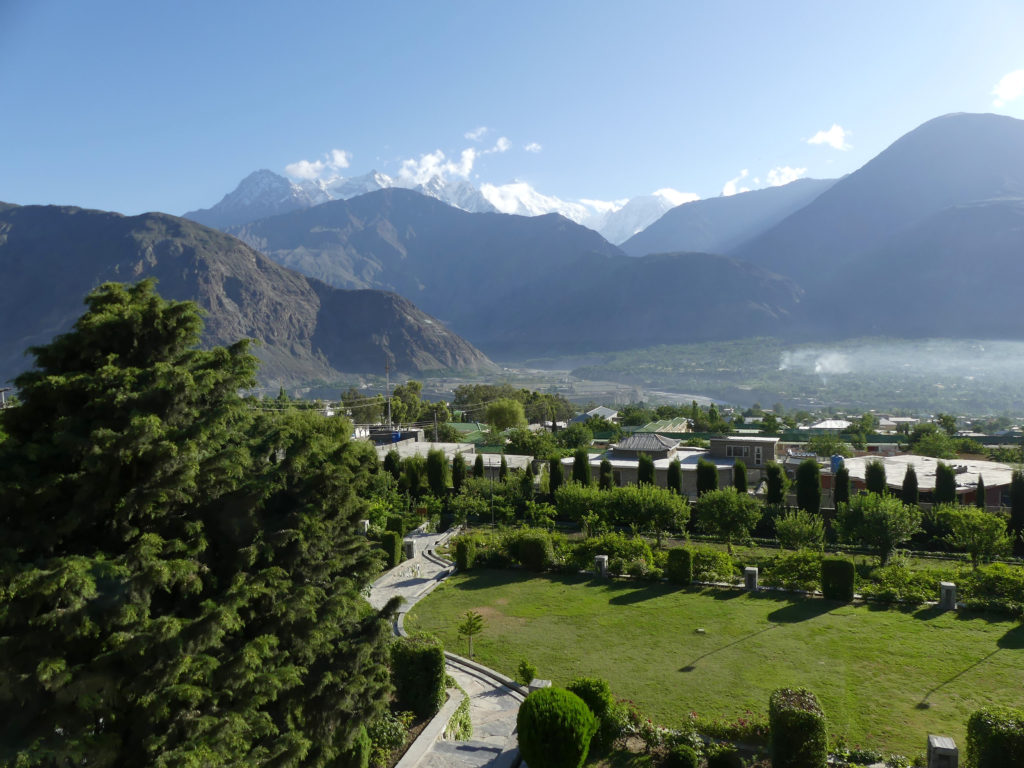 Gilgit valley and town from the Serena Hotel
Gilgit valley and town from the Serena Hotel
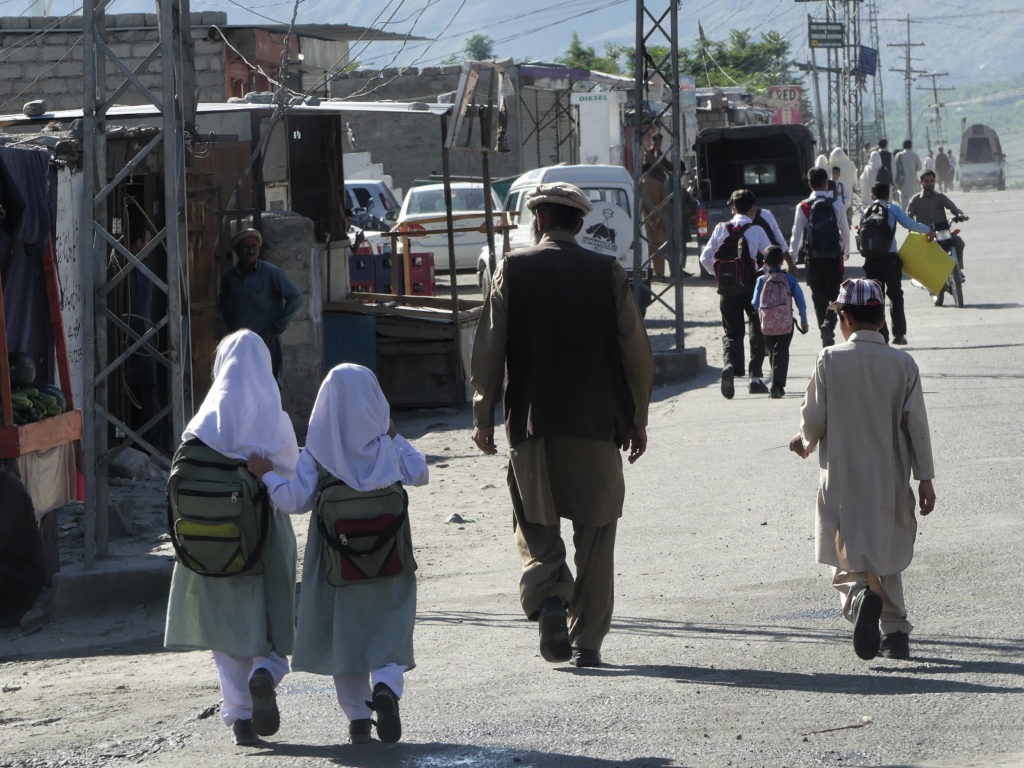 Off to school, Gilgit early morning
Off to school, Gilgit early morning
After about 30kms on the KKH, we branched off where we had a great view of the Hindu Kush range meeting the Himalaya range and the Karakorum range. This is also the point where the Hunza river joins the Indus river.
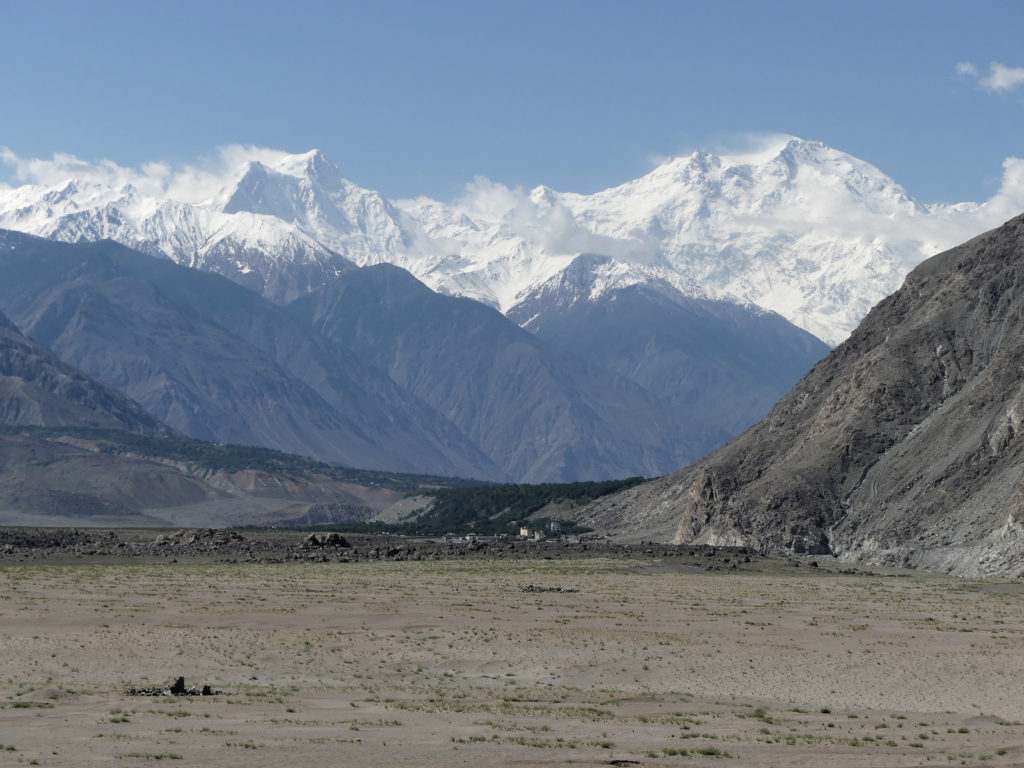 Beautiful valley where the Hindu Kush, Karakorum and Himalaya mountain ranges met.
Beautiful valley where the Hindu Kush, Karakorum and Himalaya mountain ranges met.
The road was now a Pakistani rural road i.e. it was about 1.25 cars wide and traffic went in both directions on this road, which weaved along the valley with the Indus River. Trucks also use this road, as that is the only way to deliver goods to Skardu and Khaplu. The drivers were always courteous to each other. This was the Silk Road that accessed Kashmir in Northern India.
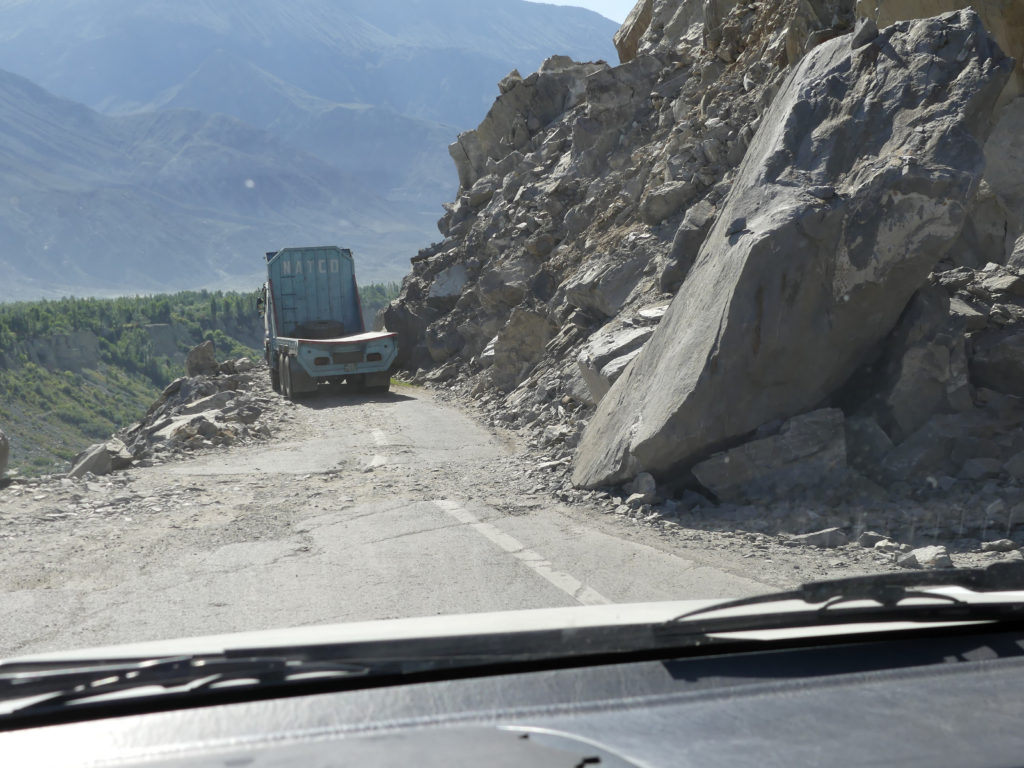 Road quickly deteriorated once we left the KKH
Road quickly deteriorated once we left the KKH
The road condition was generally not good, and this short drive of 245kms took 6+hrs to do with breaks along the way. This drive is best described as being one of the most amazing, exhilarating and adventurous drives in the world.
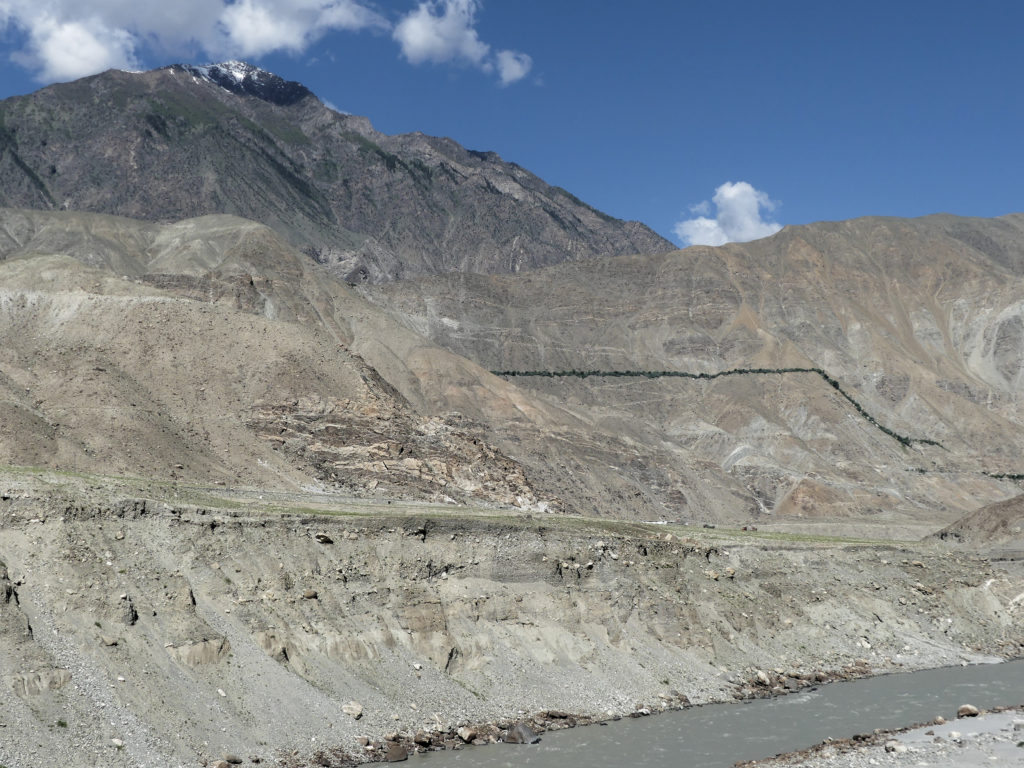 Beautiful scenery; green vegetation only along the water channel, above the Indus River
Beautiful scenery; green vegetation only along the water channel, above the Indus River
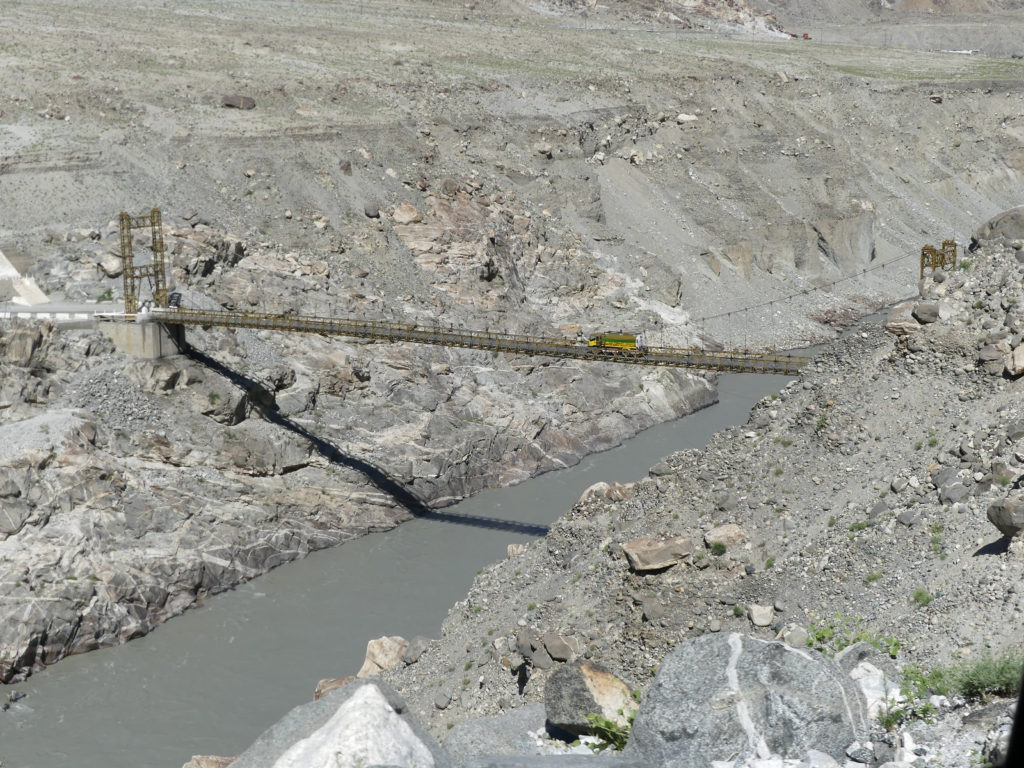 Many such suspension bridges with wooden planks across the Indus river; all built by the Pakistani Army
Many such suspension bridges with wooden planks across the Indus river; all built by the Pakistani Army
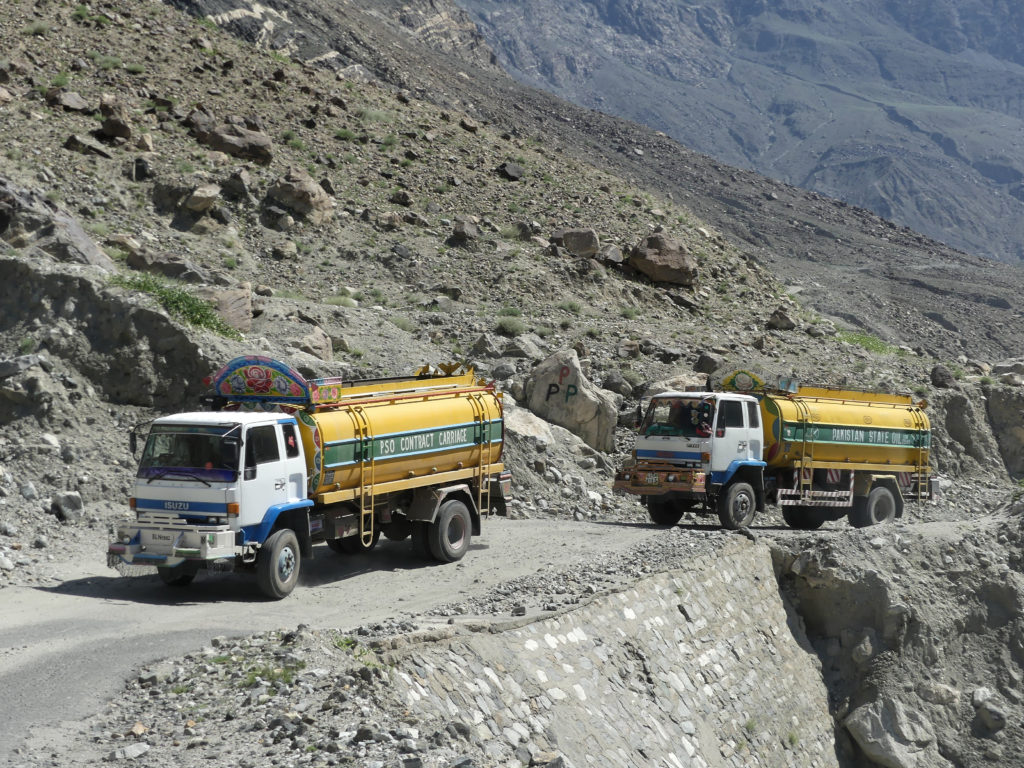 Everything is trucked in and out from Skardu via this Gilgity-Skardu Road
Everything is trucked in and out from Skardu via this Gilgity-Skardu Road
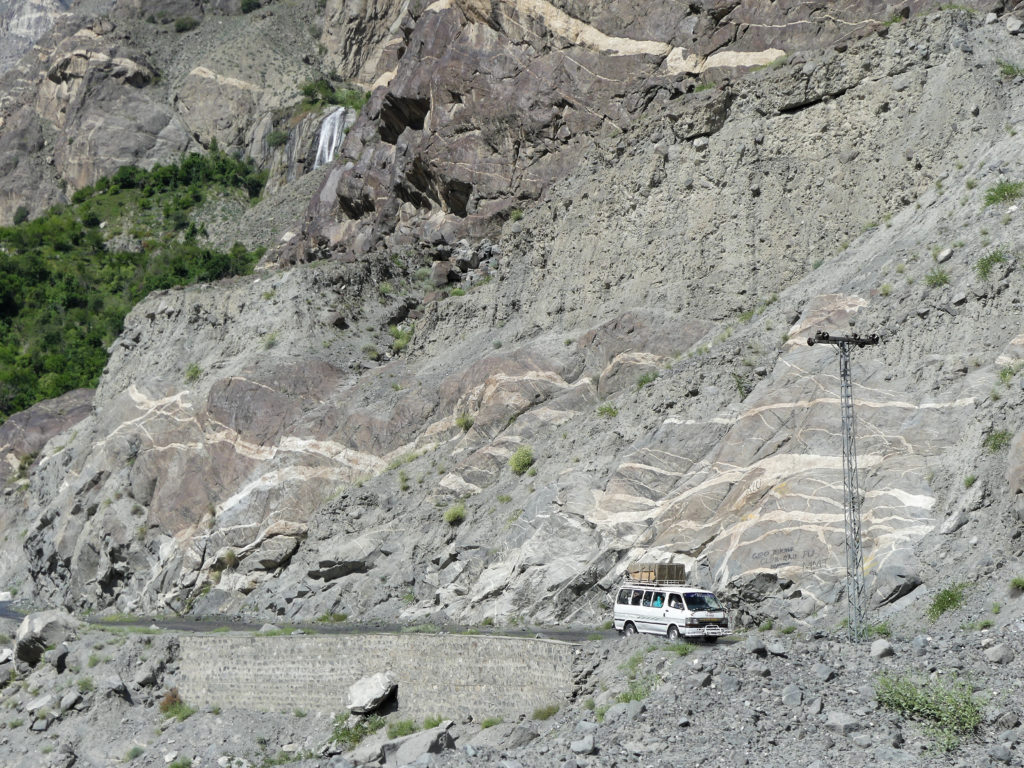 Note the interesting landscape and the waterfalls behind and above the minivan
Note the interesting landscape and the waterfalls behind and above the minivan
 Rural outdoor school classroom.
Rural outdoor school classroom.
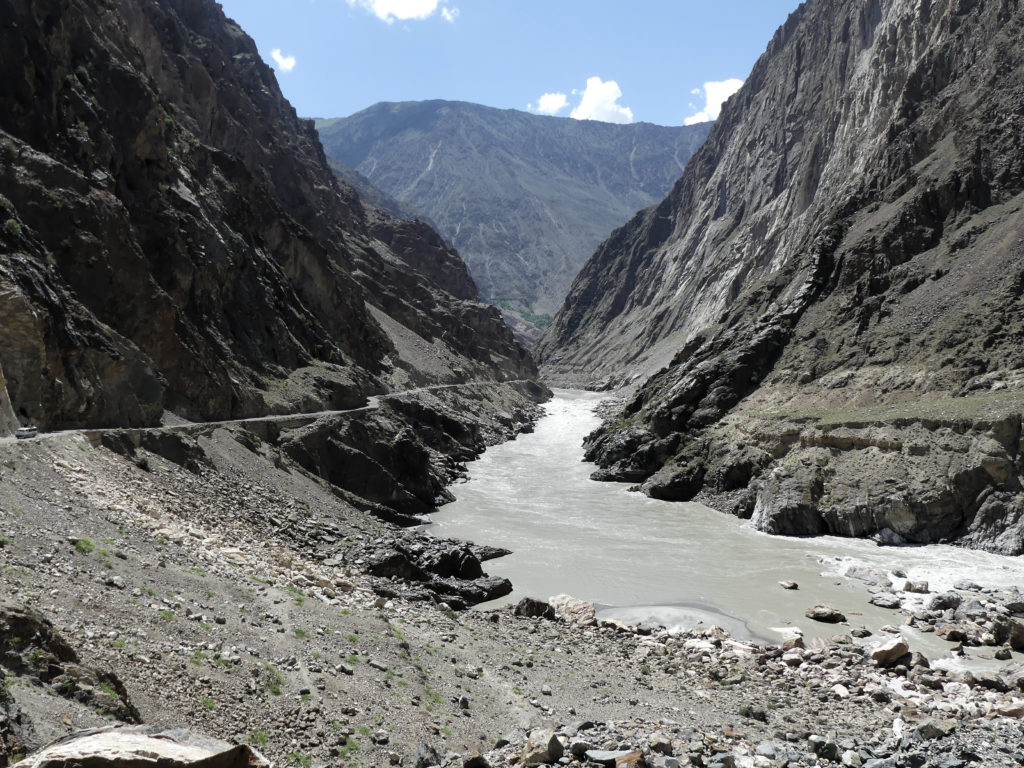 Road snakes along the Indus river valley
Road snakes along the Indus river valley
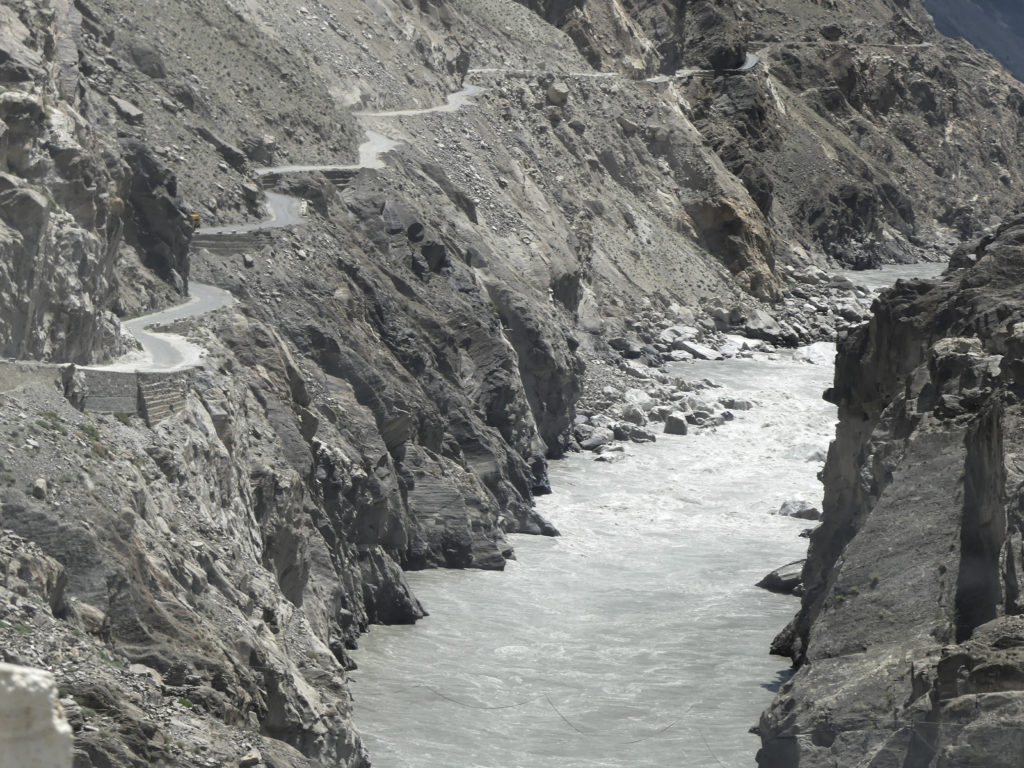 Road snakes along the Indus river valley
Road snakes along the Indus river valley
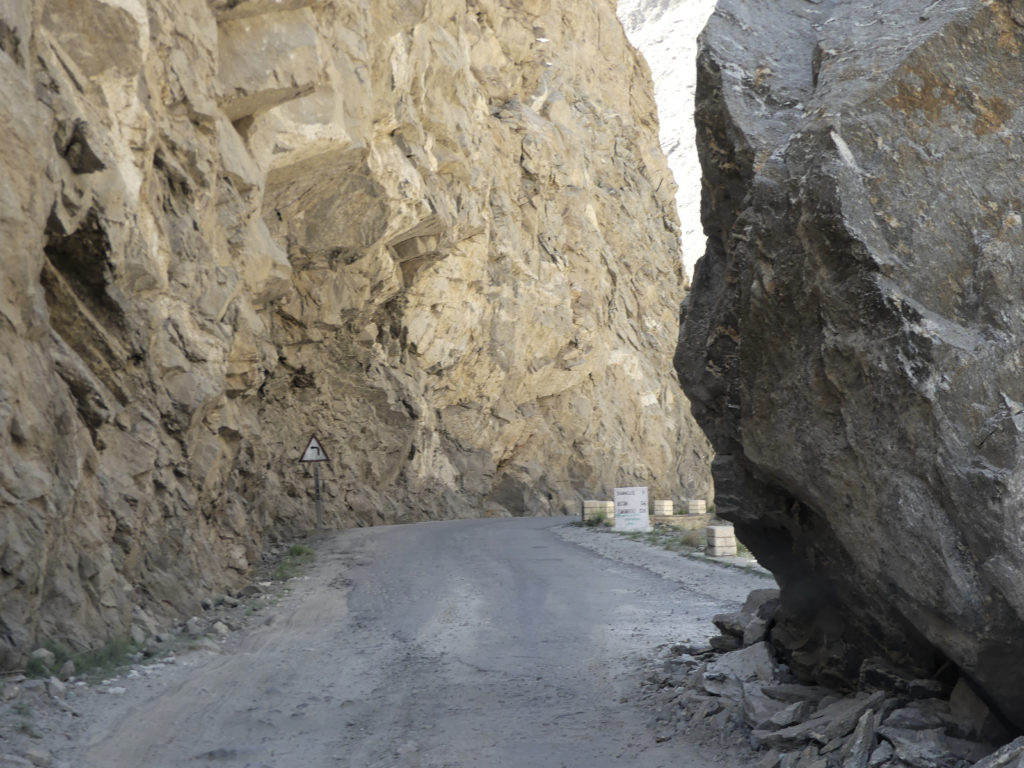 Workaround the avalanched huge rock
Workaround the avalanched huge rock
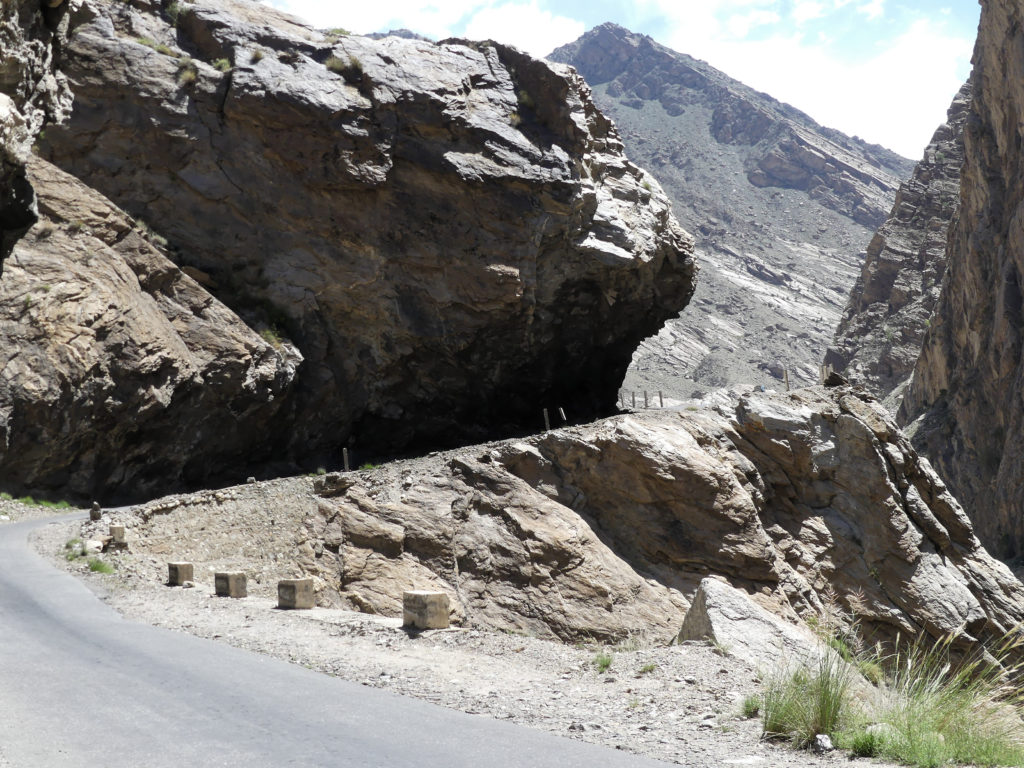 Sometimes scary roads; will that rock above the road stay there until after I have passed?
Sometimes scary roads; will that rock above the road stay there until after I have passed?
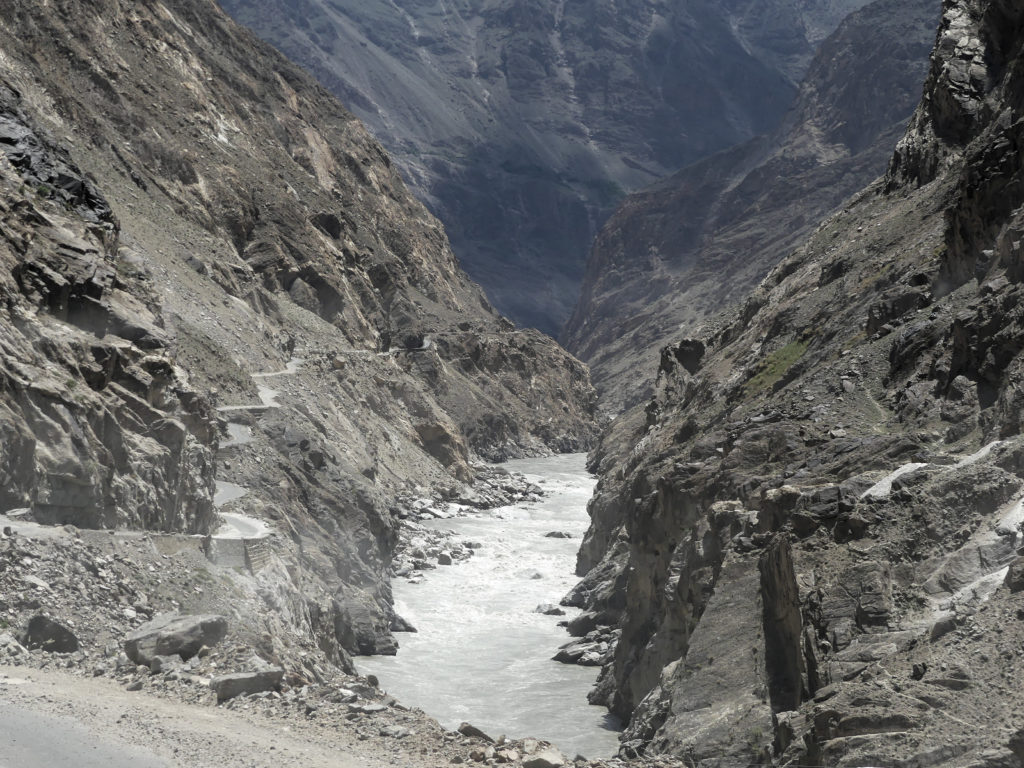 Majestic scenery dwarfing the snaking road
Majestic scenery dwarfing the snaking road
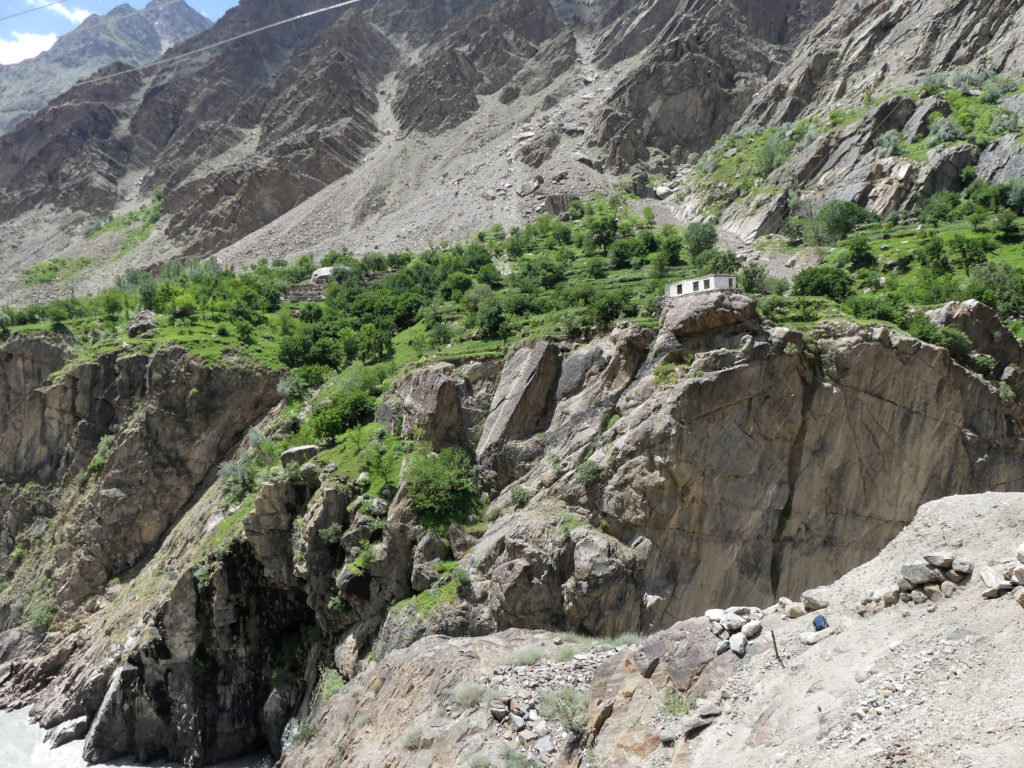 Small villages where flat irrigated land was possible
Small villages where flat irrigated land was possible
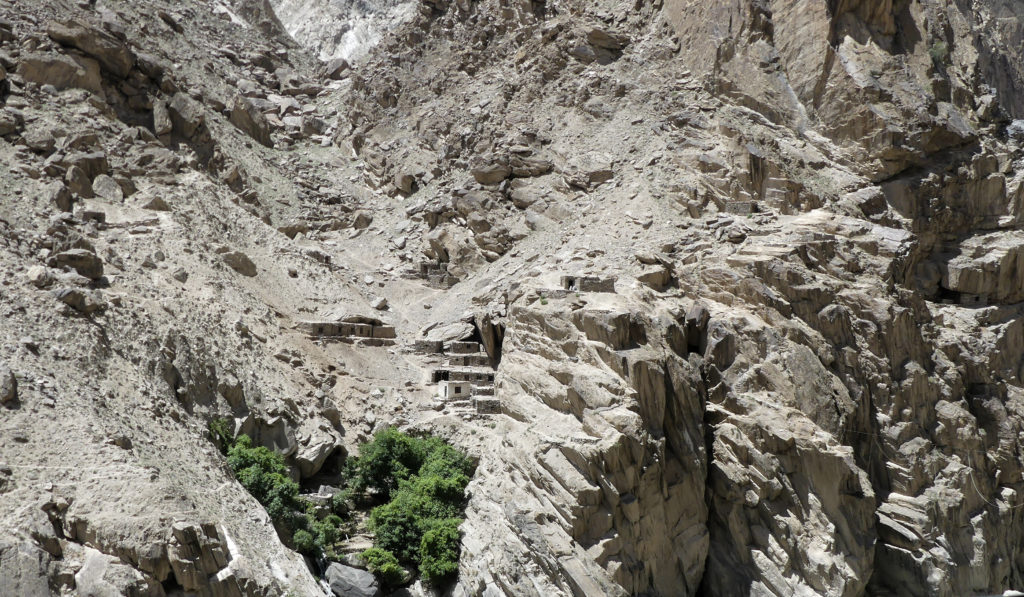 People live in remote and precarious places to work and mine the Himalayas (below) for its semi-precious stones
People live in remote and precarious places to work and mine the Himalayas (below) for its semi-precious stones
Pictures cannot do justice to the raw beauty of this drive.
At one point, there was also a 100% natural, 100% organic car wash ☺.
100% natural, 100% organic car wash 🙂
We passed incredible views, and multiple villages along the way, and multiple police checkpoints, and at each district crossing, we had an FFC (Foreigners Facilitation Center) where our documents were examined, and questions about our intentions, our journey etc. were asked, and documented on paper.
The villages all had running water, electricity and sewage, just like in Hunza valley. There were multiple rope pulley bridges over the Indus river, with a small platform on which people sat and pulled themselves across the river to the other side. We did not experience this as Dilshad refused to go on one of these. ☹
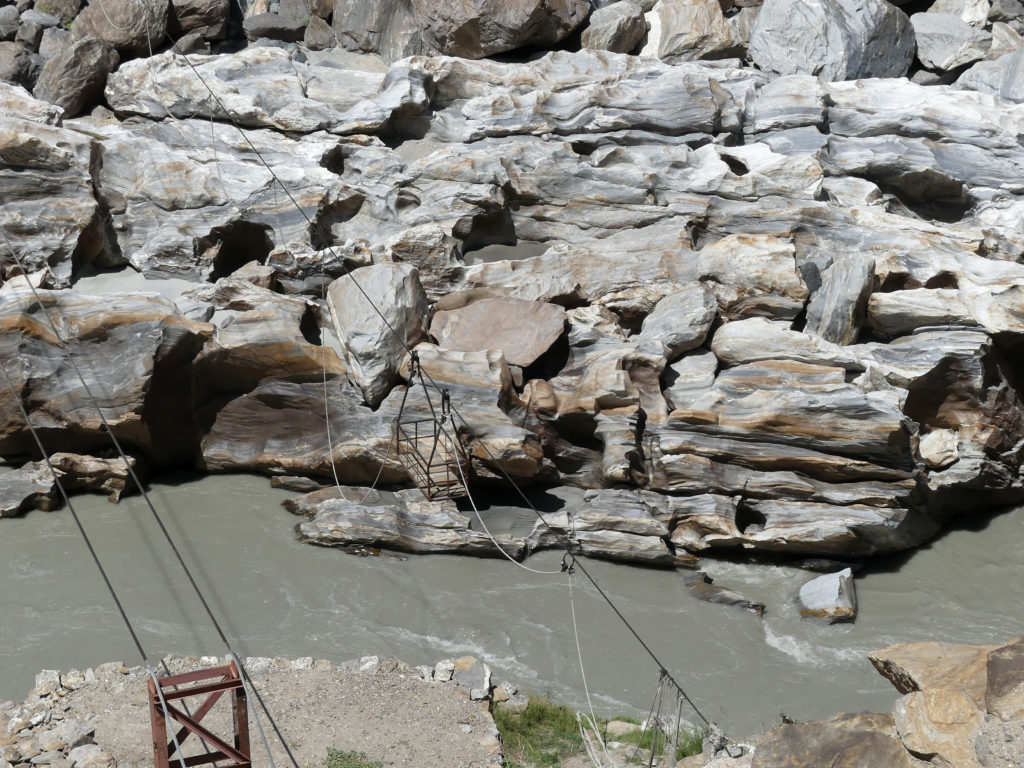 Pulley platform where people would pull themselves across the Indus river.
Pulley platform where people would pull themselves across the Indus river.
We stopped for lunch at AstakNala, which is a small town half way between Giglit and Skardu. We stopped at the PDTC Motel (Pakistani Govt run motels that provide good and clean basic accommodation to travelers) as they always had clean bathrooms. To our surprise, the Manager there, Imran Ulla Beg, was an Ismaili from Hunza who Zafar and Abbas knew well. So after tea here we went across the road for a riverside lunch
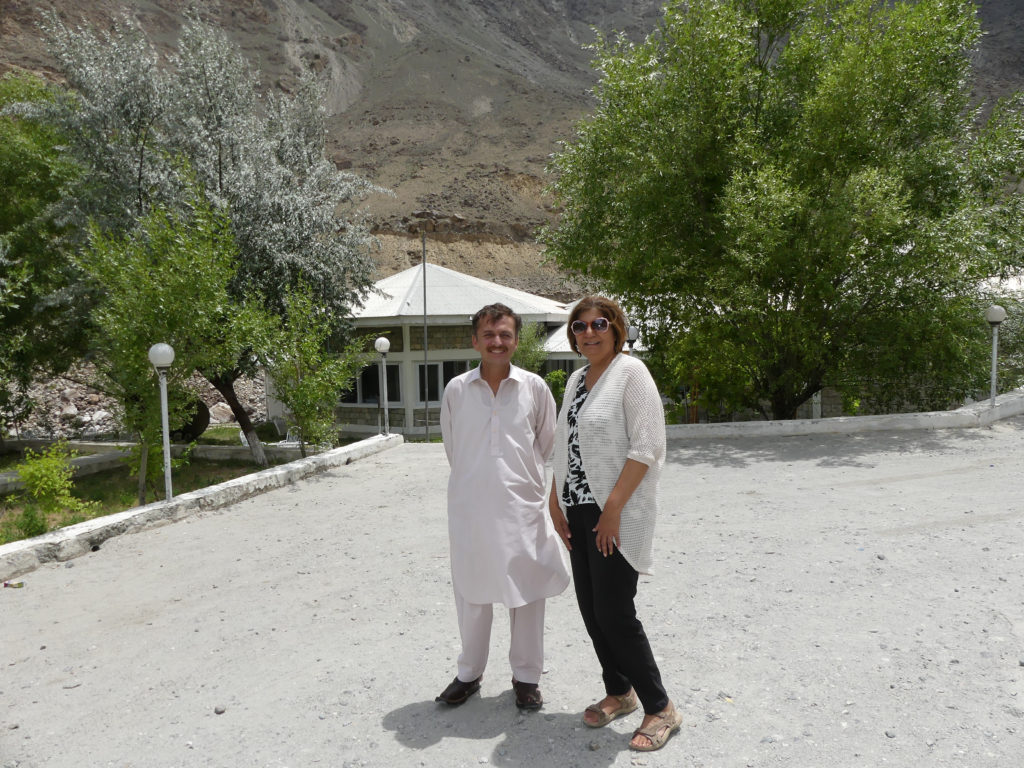 At PDTC motel AstakNala (in back), with Imran, the manager, who also was from Hunza
At PDTC motel AstakNala (in back), with Imran, the manager, who also was from Hunza
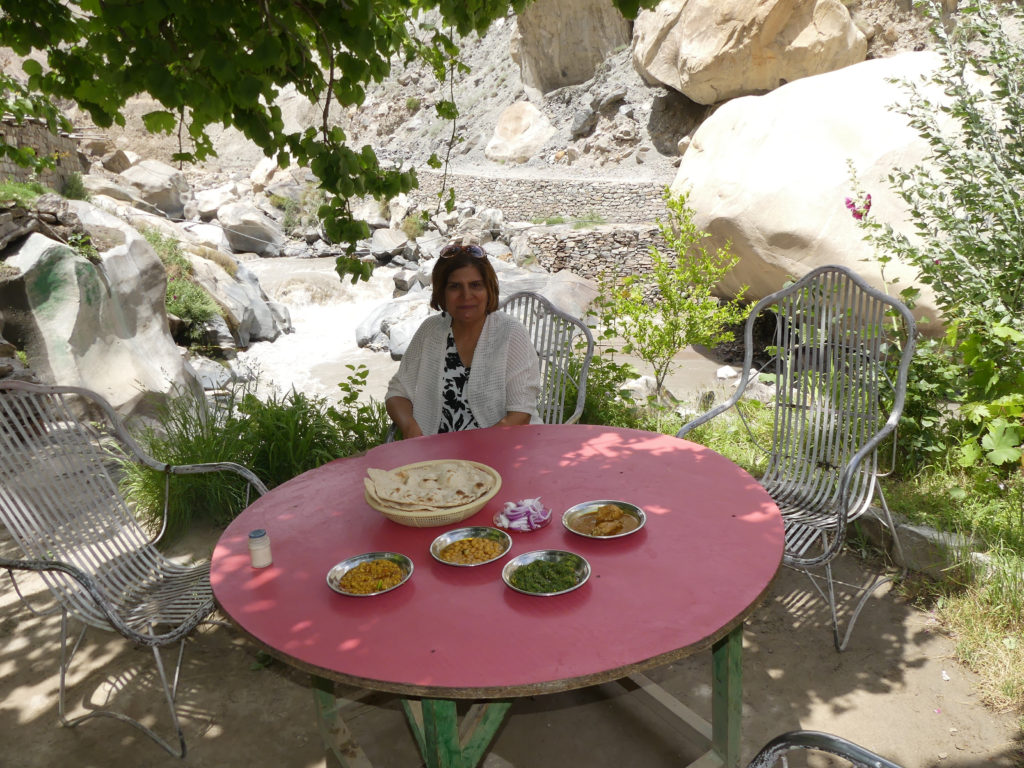 Lunch at roadside/riverside cafe, AstakNala
Lunch at roadside/riverside cafe, AstakNala
There were multiple single lane suspension bridges with wooden slats over the Indus river, and all traffic used them, one vehicle or truck at a time, slowly. Photographs of bridges, police and army installations were forbidden, but had to sneak a few in 🙂
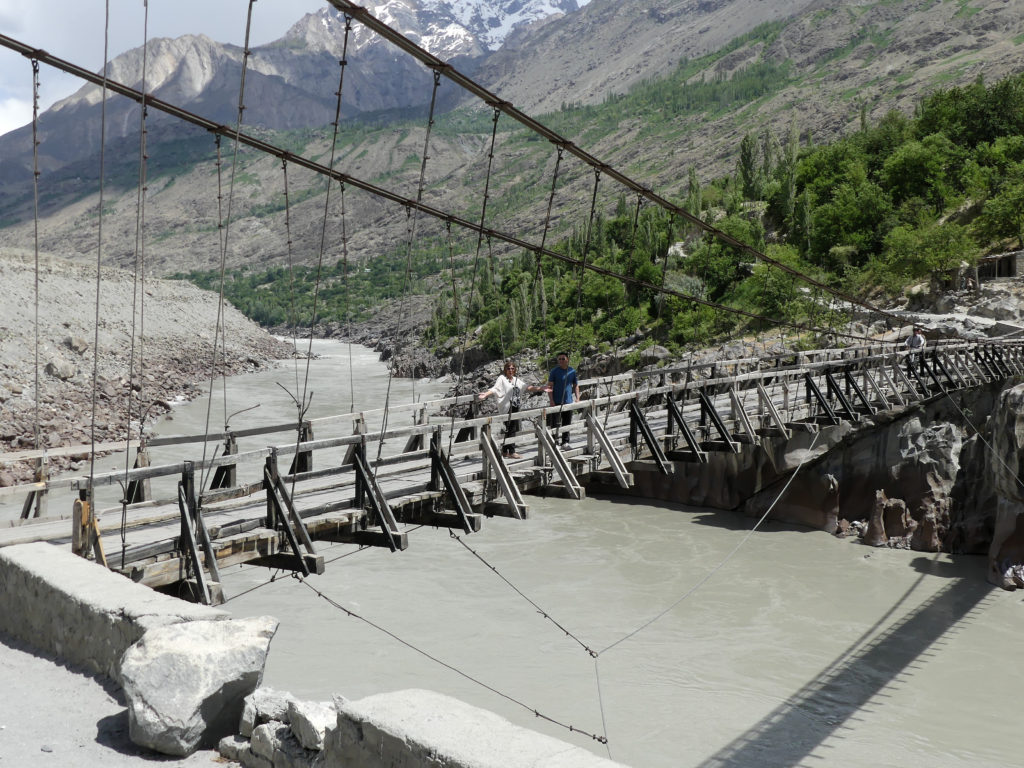 Dilshad and Abbas on typical suspension bridge
Dilshad and Abbas on typical suspension bridge
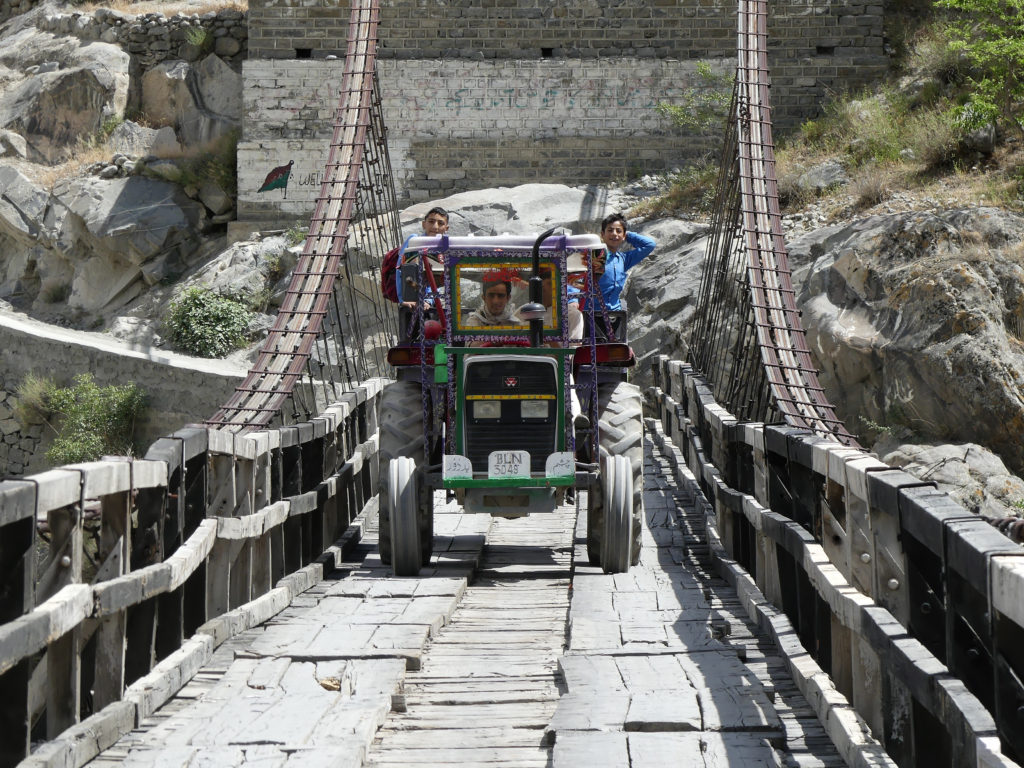 One lane suspension bridge, wooden slats, 5mph max speed, no photographs allowed
One lane suspension bridge, wooden slats, 5mph max speed, no photographs allowed
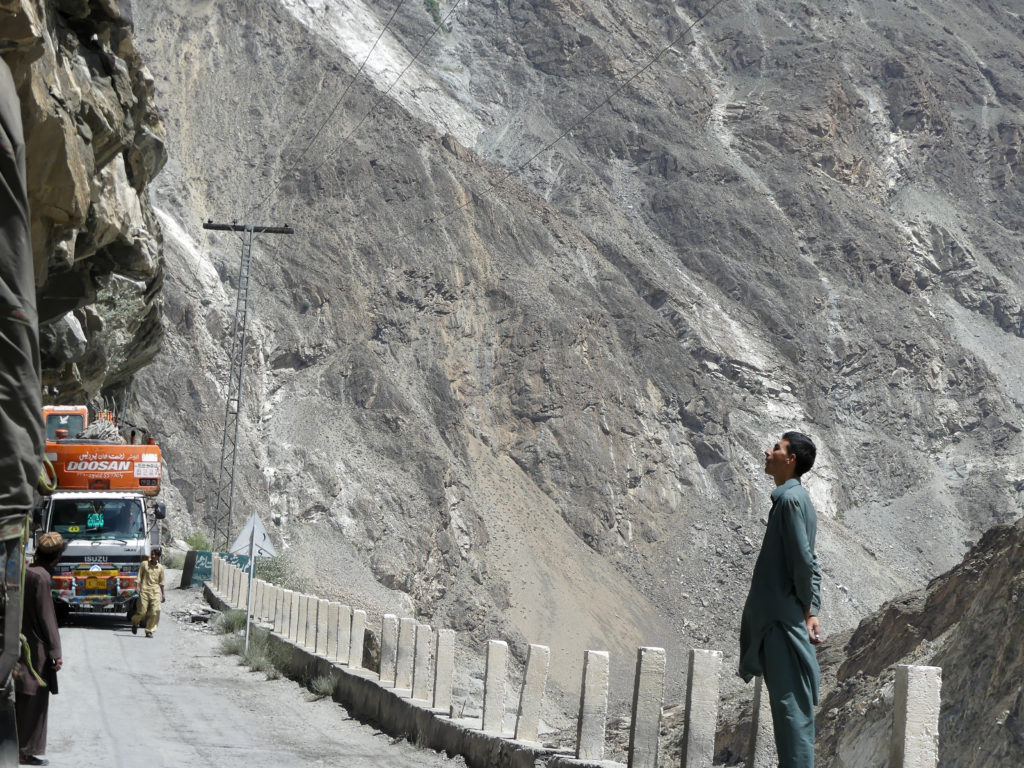 Stalled trucks added to the excitement of narrow road, and very steep mountainsides
Stalled trucks added to the excitement of narrow road, and very steep mountainsides
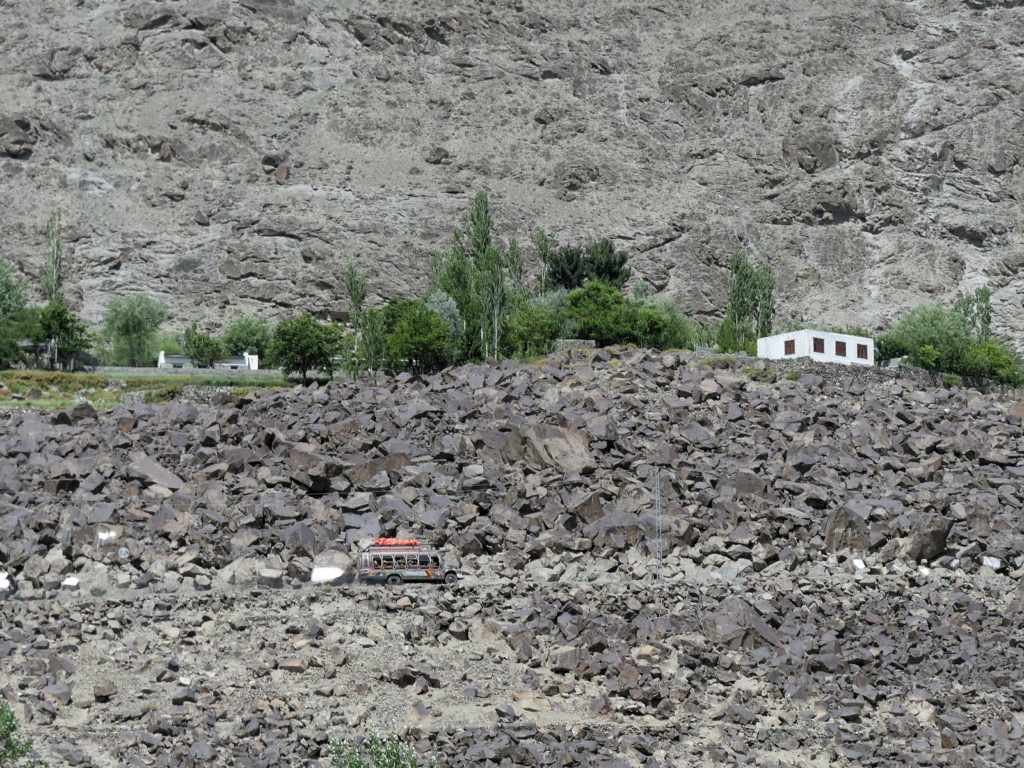 Local bus; dwarfed by the size of the rocks
Local bus; dwarfed by the size of the rocks
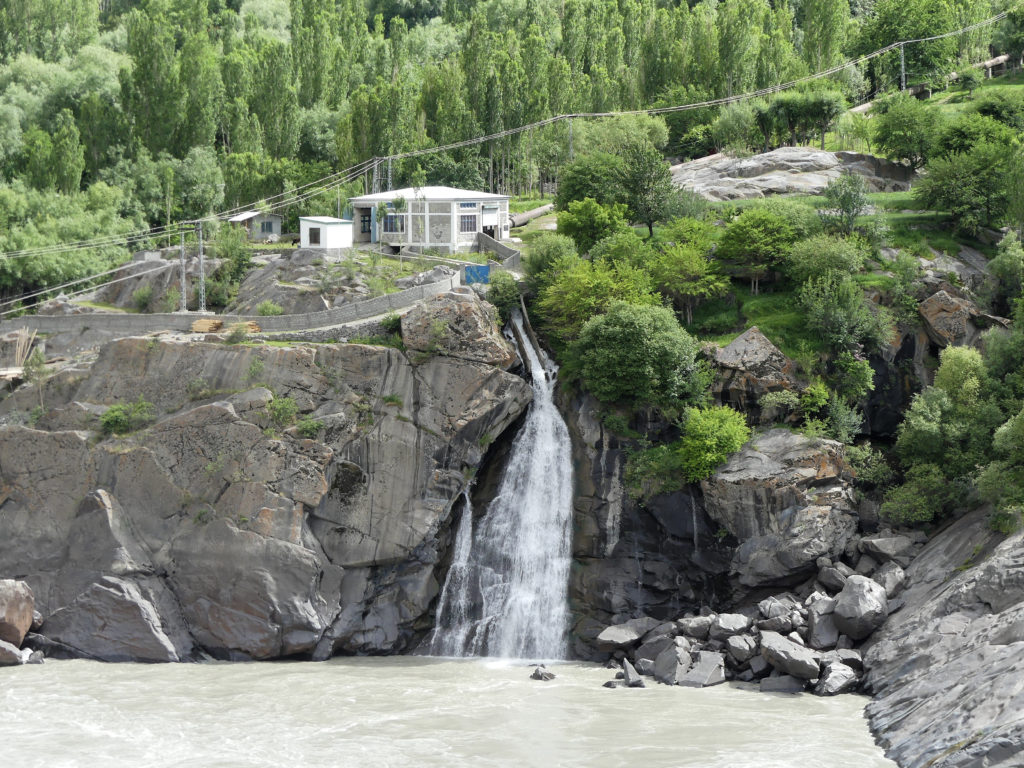 Micro Hydro electric power (~1MW) station
Micro Hydro electric power (~1MW) station
The Indus river was very fast moving up to now, but in Skardu it was a wide plain river, with lots of white sand and with the wind, the white sand would get spread everywhere.
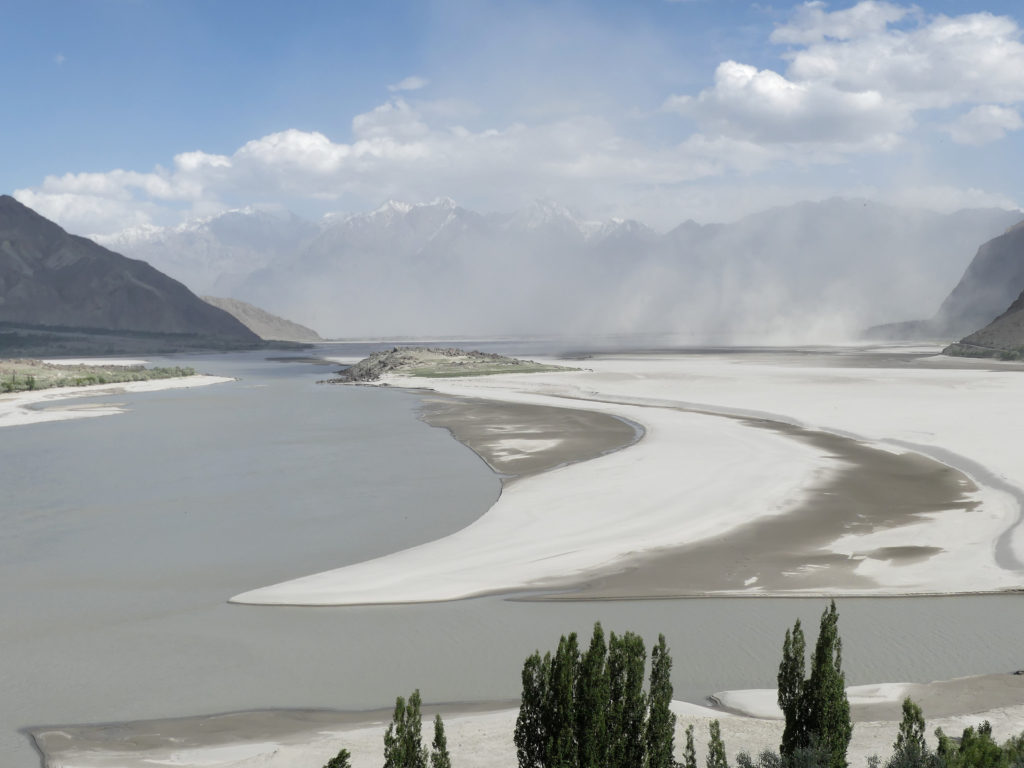 Indus river near Skardu; the winds caused sand to fly…..
Indus river near Skardu; the winds caused sand to fly…..
We went to the famed Shangri-La hotel at Lake Kachura for high tea.
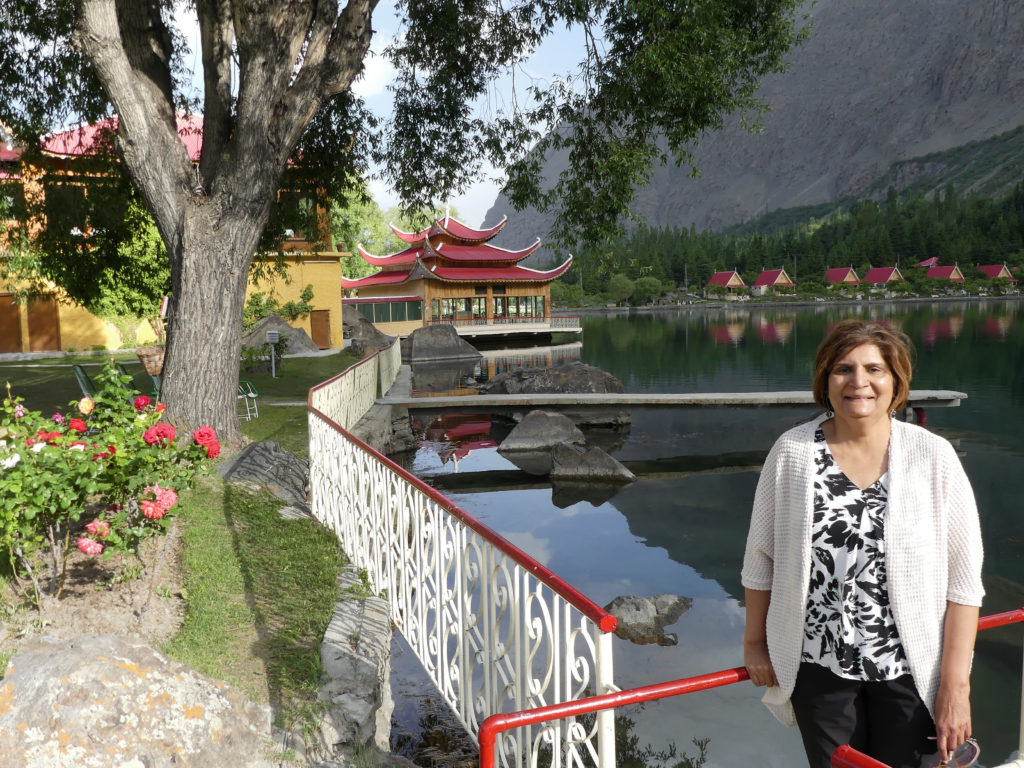 At the famous Shangri-La hotel
At the famous Shangri-La hotel
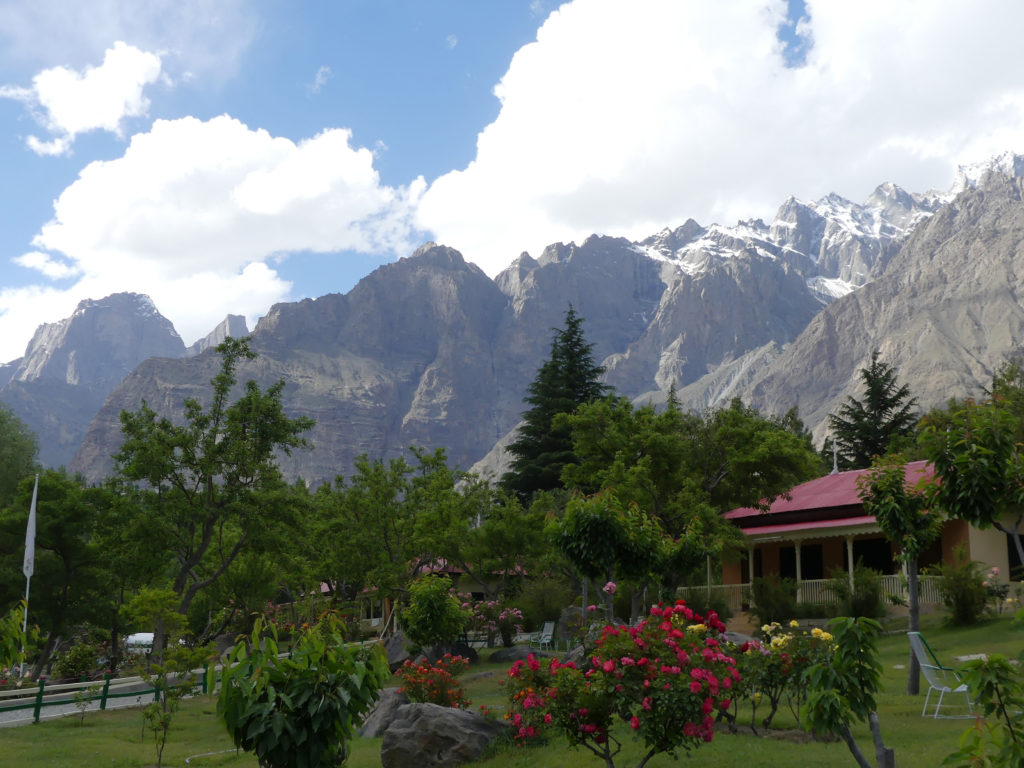 Beautiful mountains backdrop for Shangri-La Hotel
Beautiful mountains backdrop for Shangri-La Hotel
Then into Skardu to our hotel. Took a while to find our hotel as it was in a remote (quiet) area and a little bit out of the town of Skardu. Once settled in, we went back into the town for some walking and shopping. That is when Dilshad noticed that there were no women walking around the town; not a single one.
So Dilshad got stared at, but being a foreigner, no issue. This is probably one of few places I have been to where women were simply not visible outside the home. This must obviously be a very conservative place. Later on, we found out this area was called the Purdah Bazaar; ladies unseen
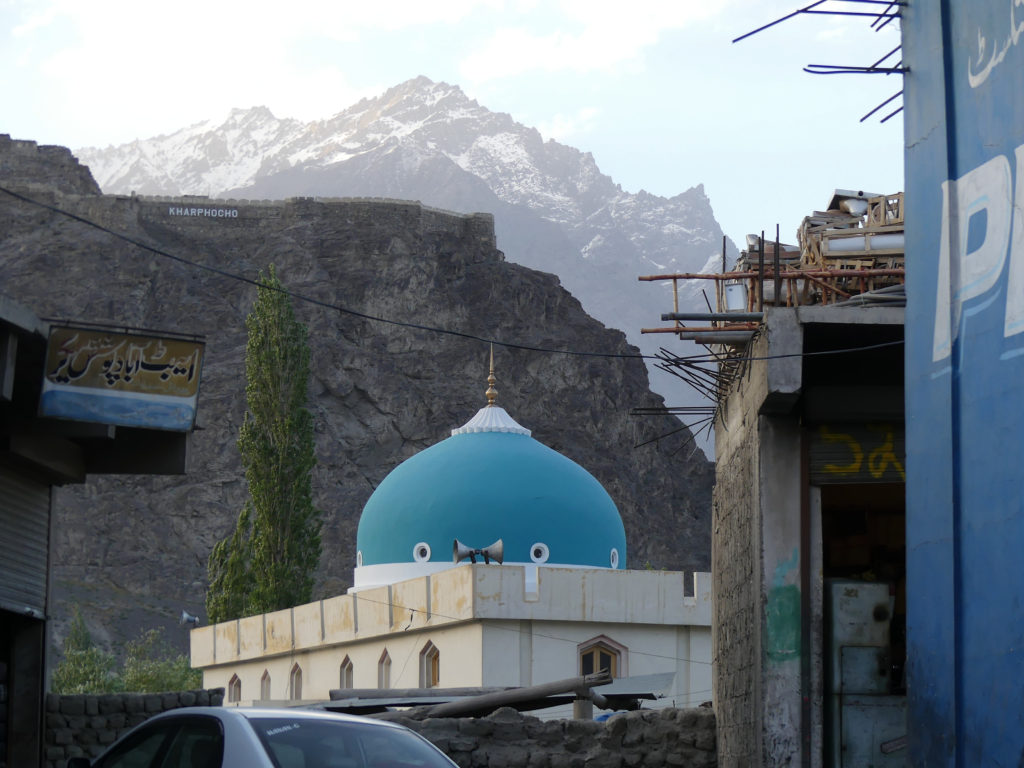 Beautiful backdrops, strategic Kharphocho Fort and mountains in background
Beautiful backdrops, strategic Kharphocho Fort and mountains in background
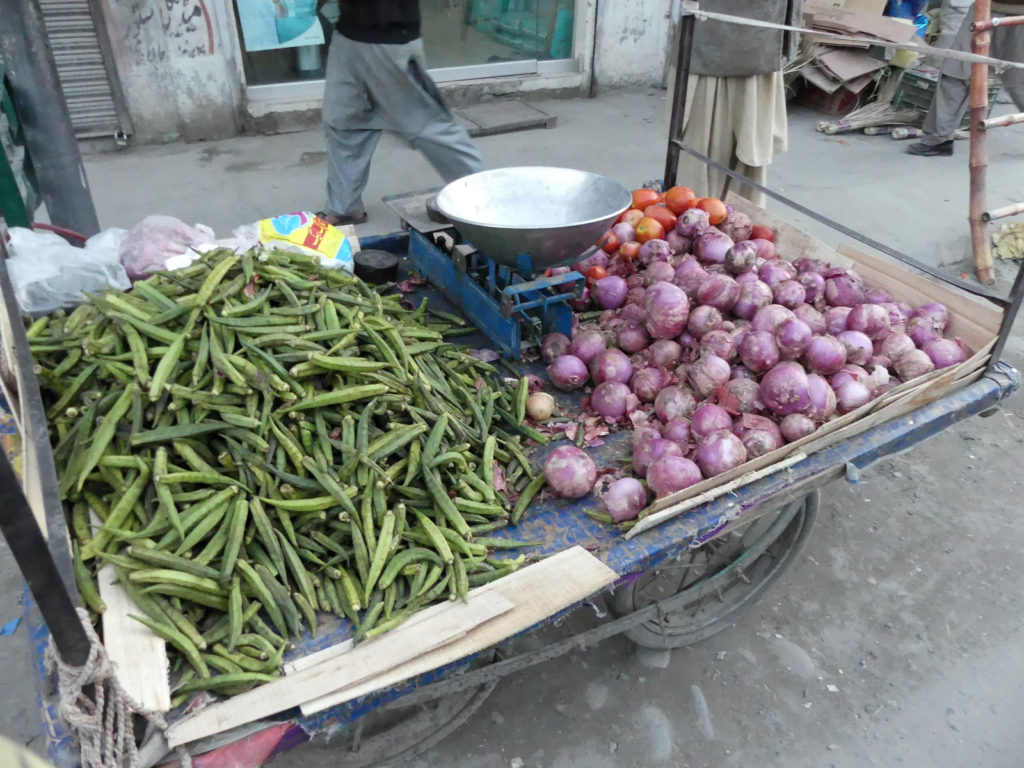 After the walk through the town with obligatory Polo grounds, decide to have dinner at the hotel as it was getting dark. The hospitality industry here is well developed and the people worked hard to please guests and foreigners. Due to lack of tourists, you get great service. Refreshingly nice. Then hit the sack.
After the walk through the town with obligatory Polo grounds, decide to have dinner at the hotel as it was getting dark. The hospitality industry here is well developed and the people worked hard to please guests and foreigners. Due to lack of tourists, you get great service. Refreshingly nice. Then hit the sack.
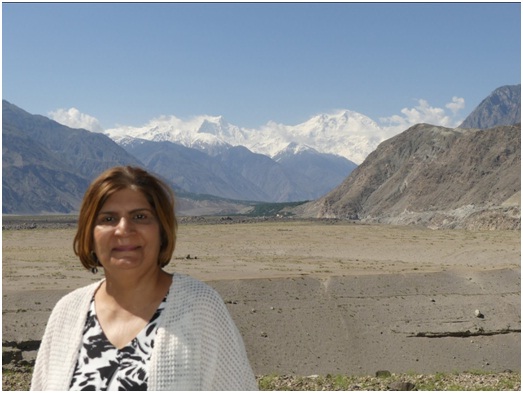
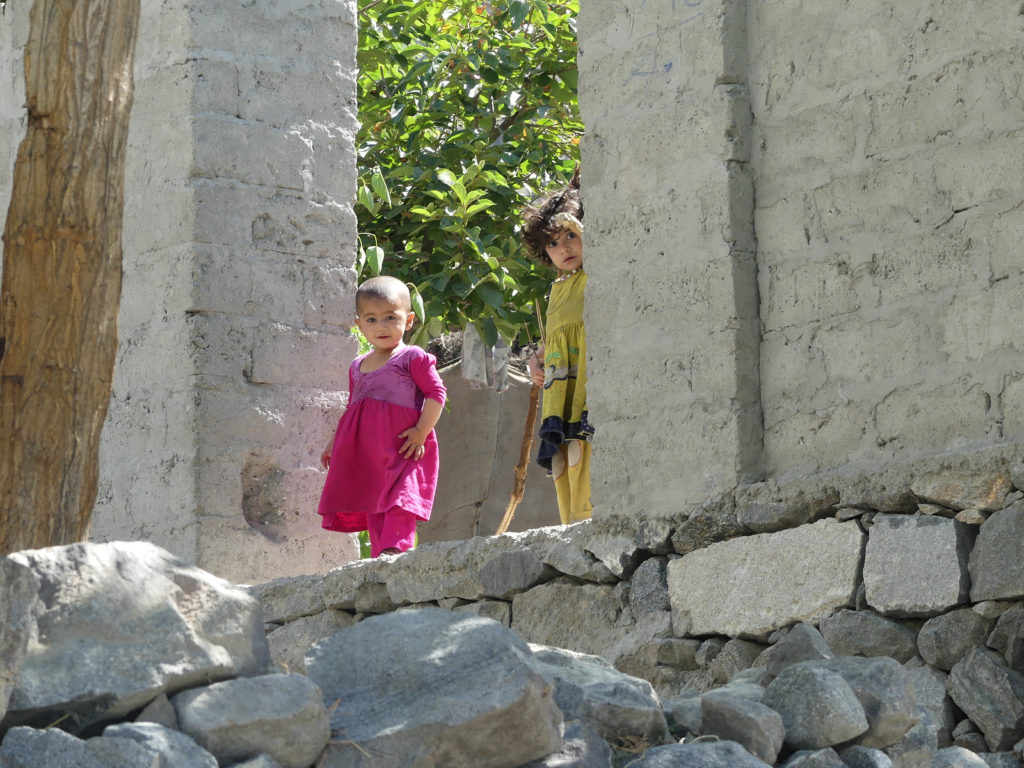
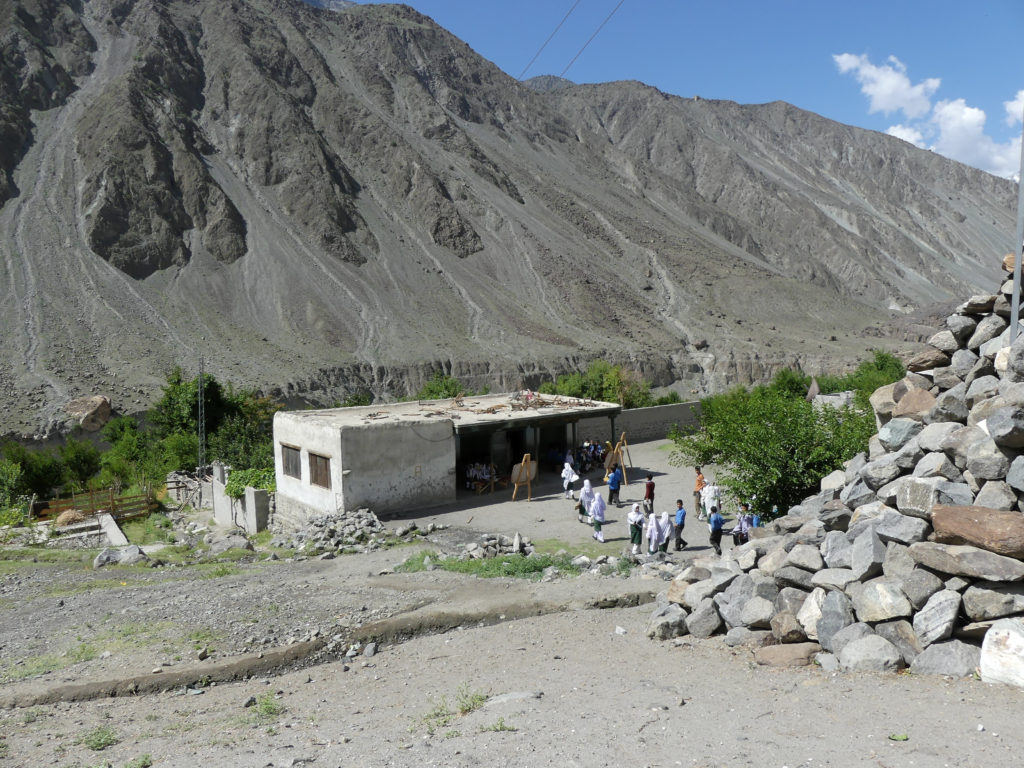
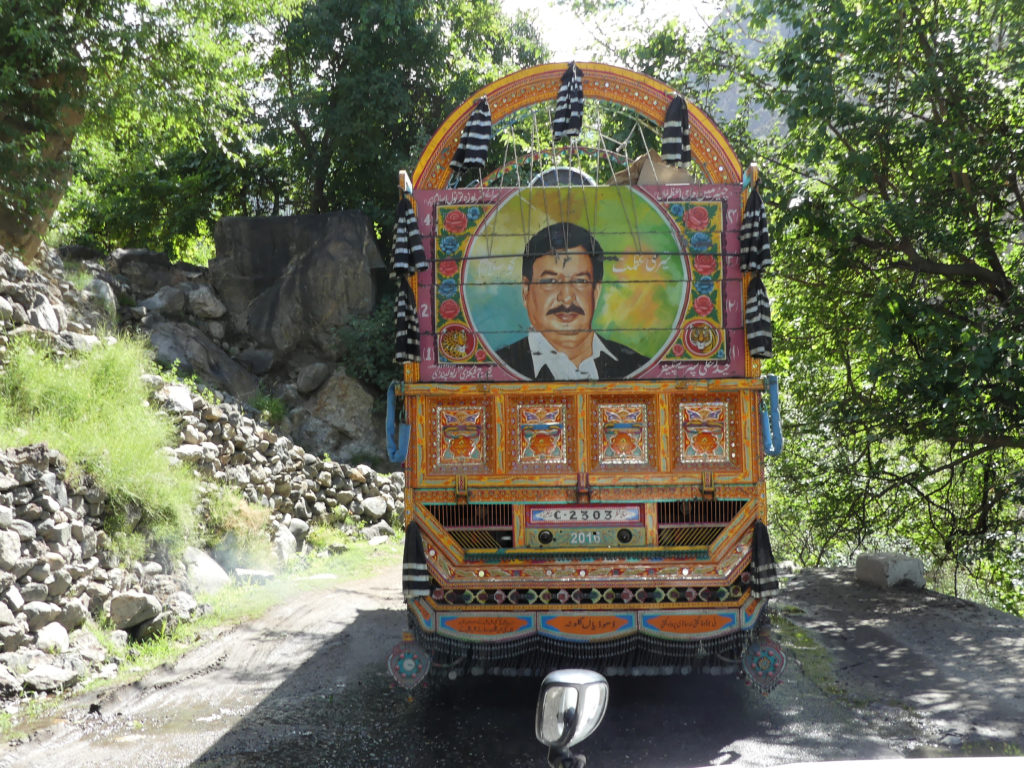
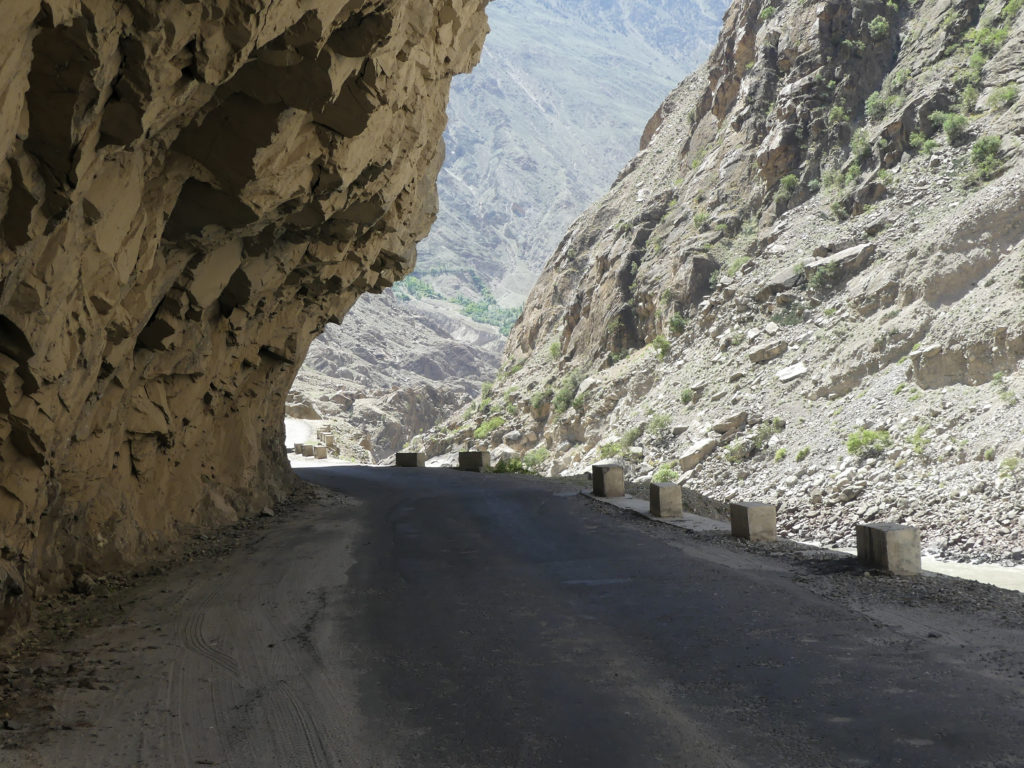
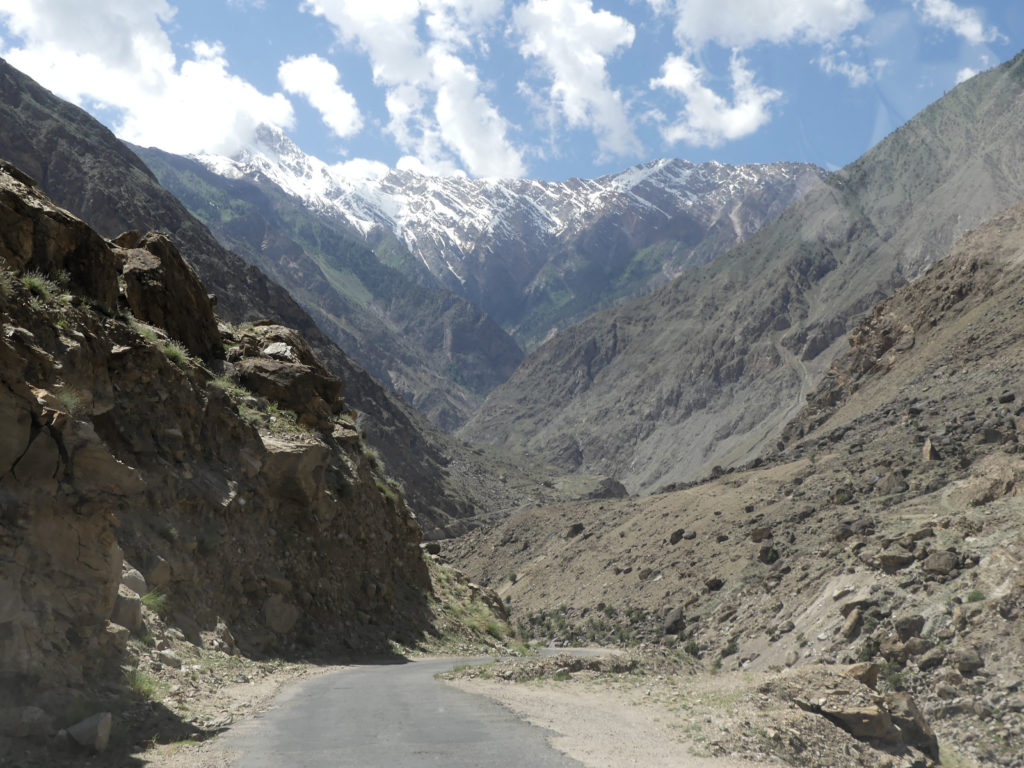
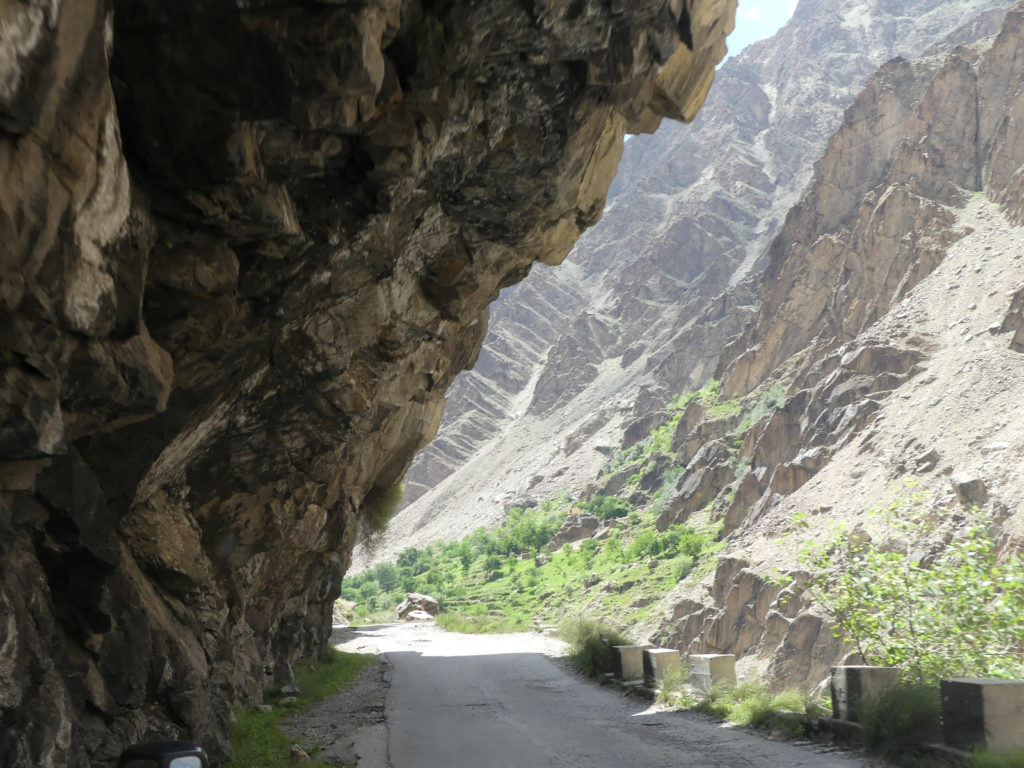
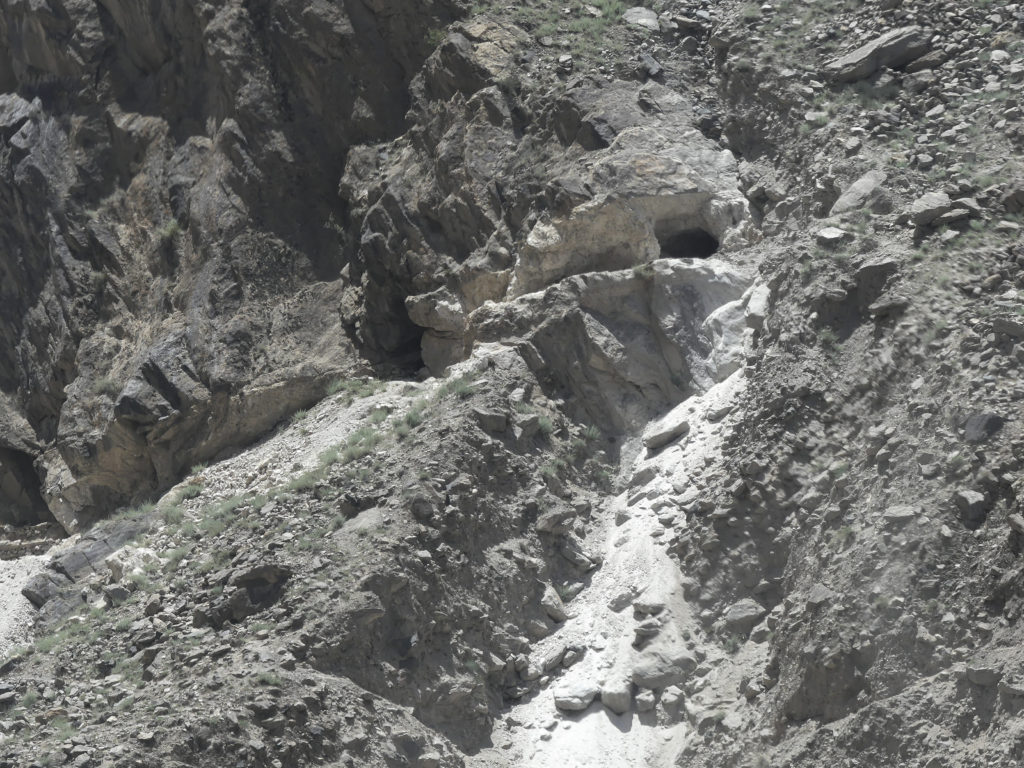
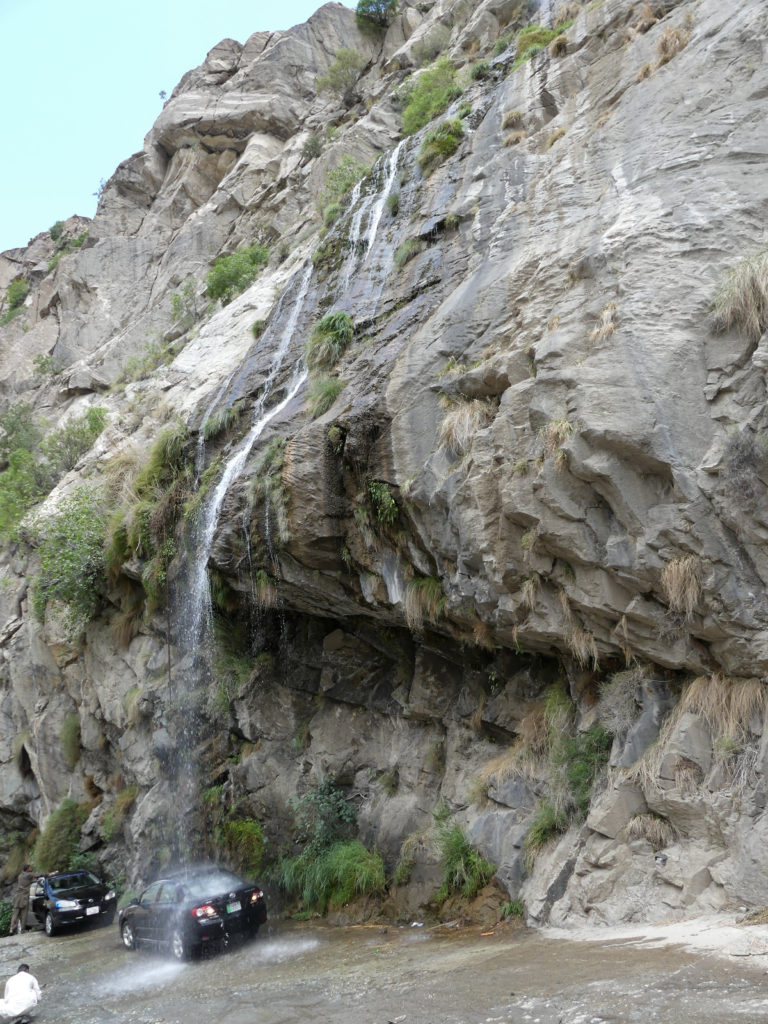
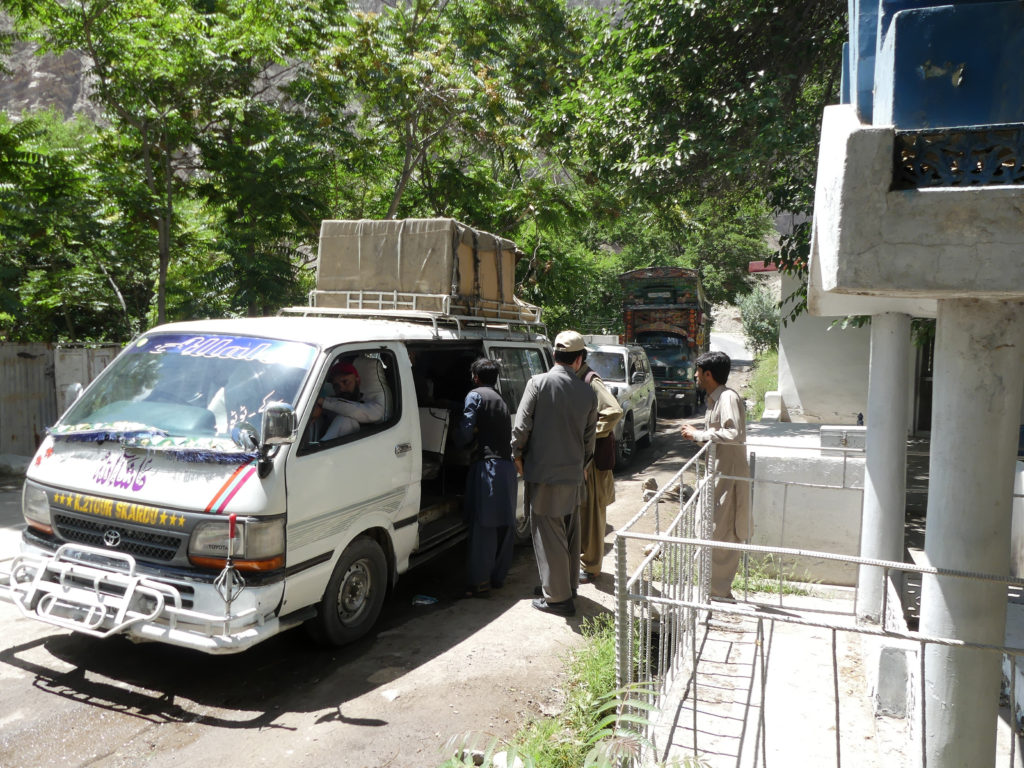
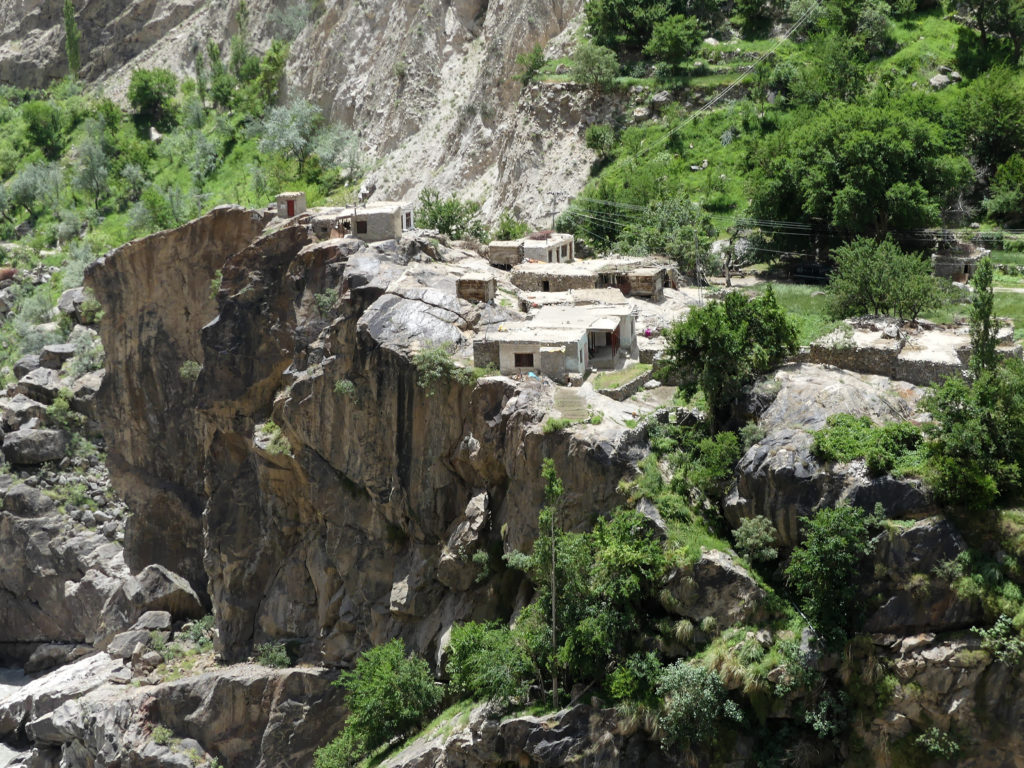
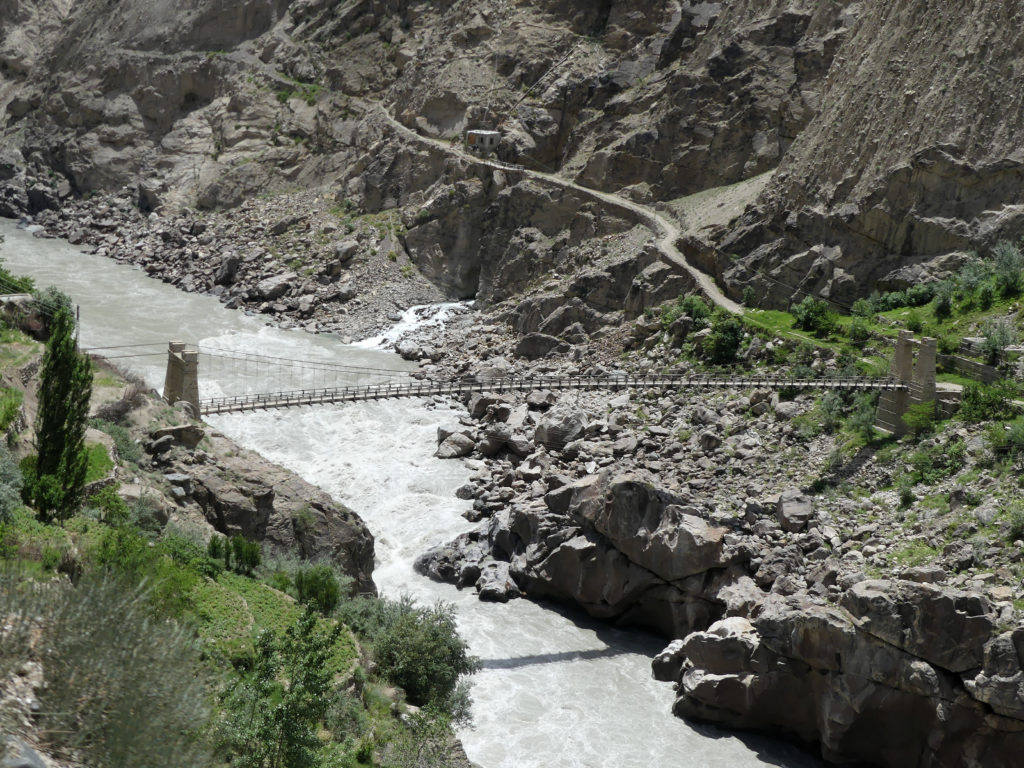
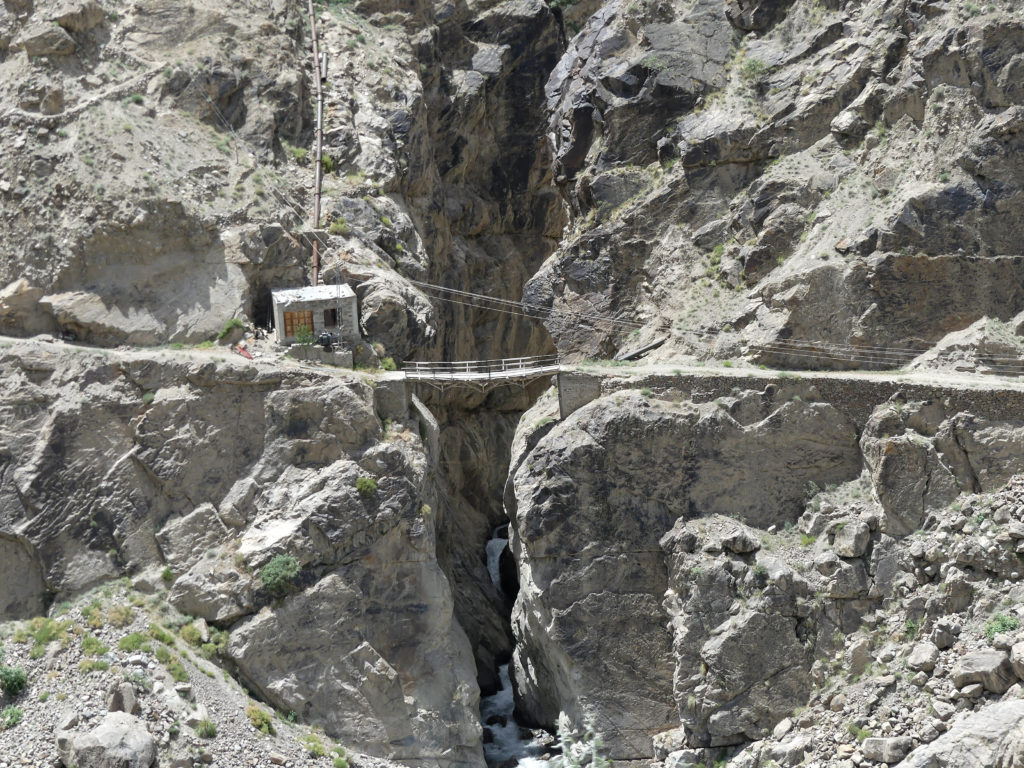
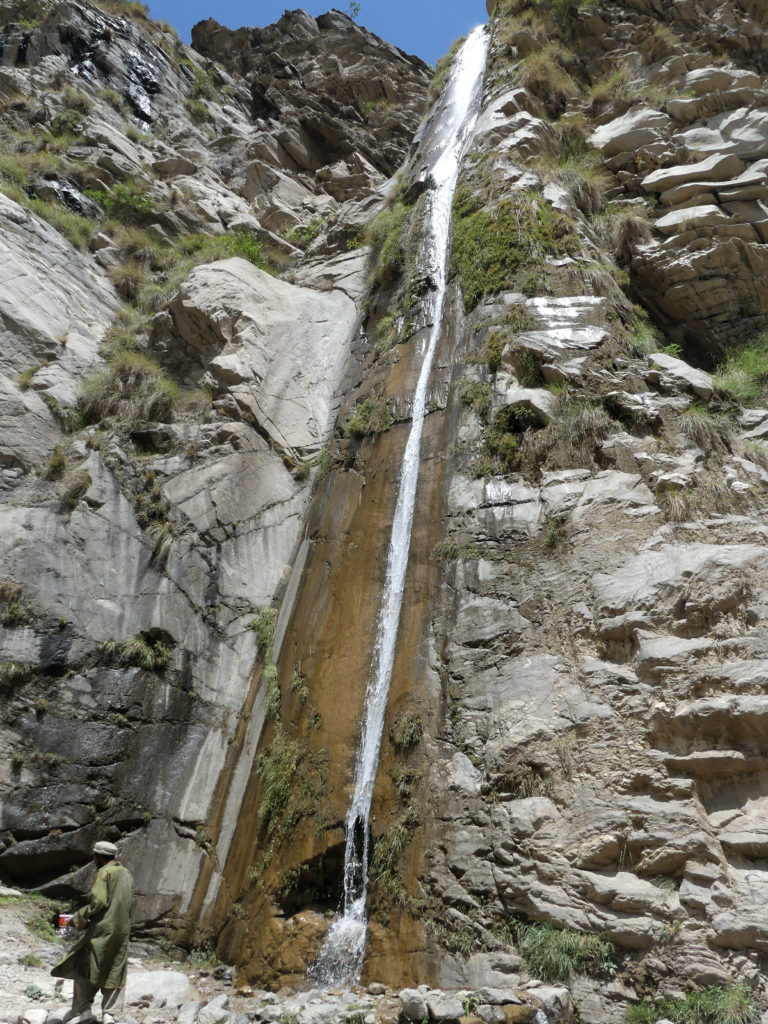
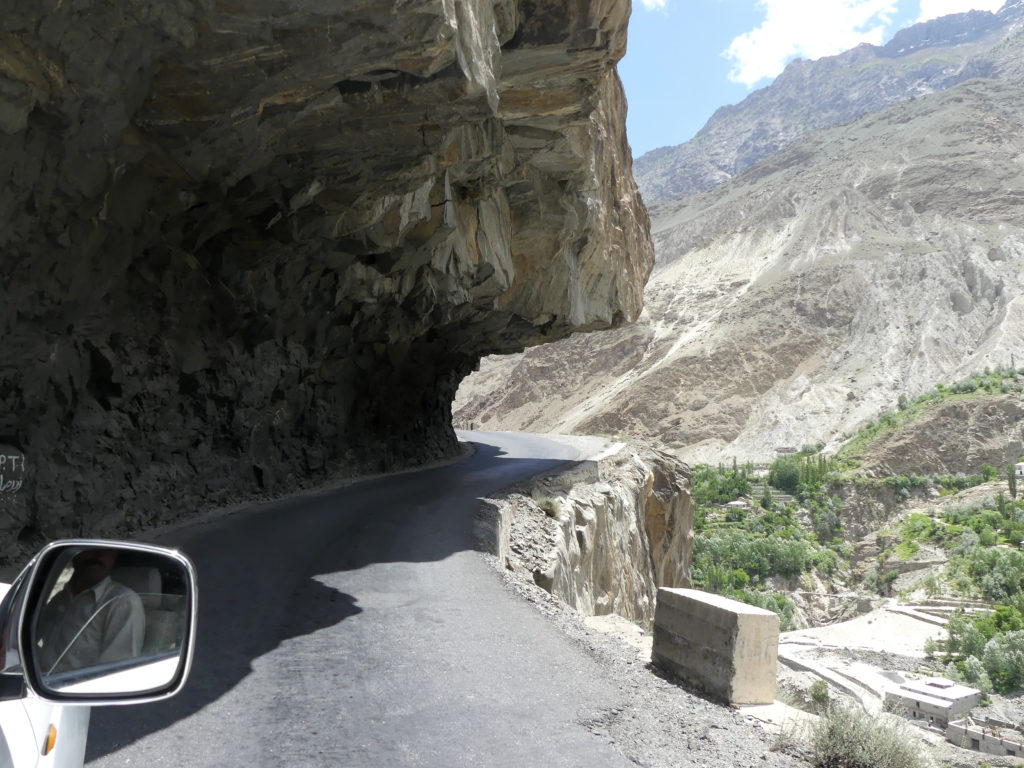
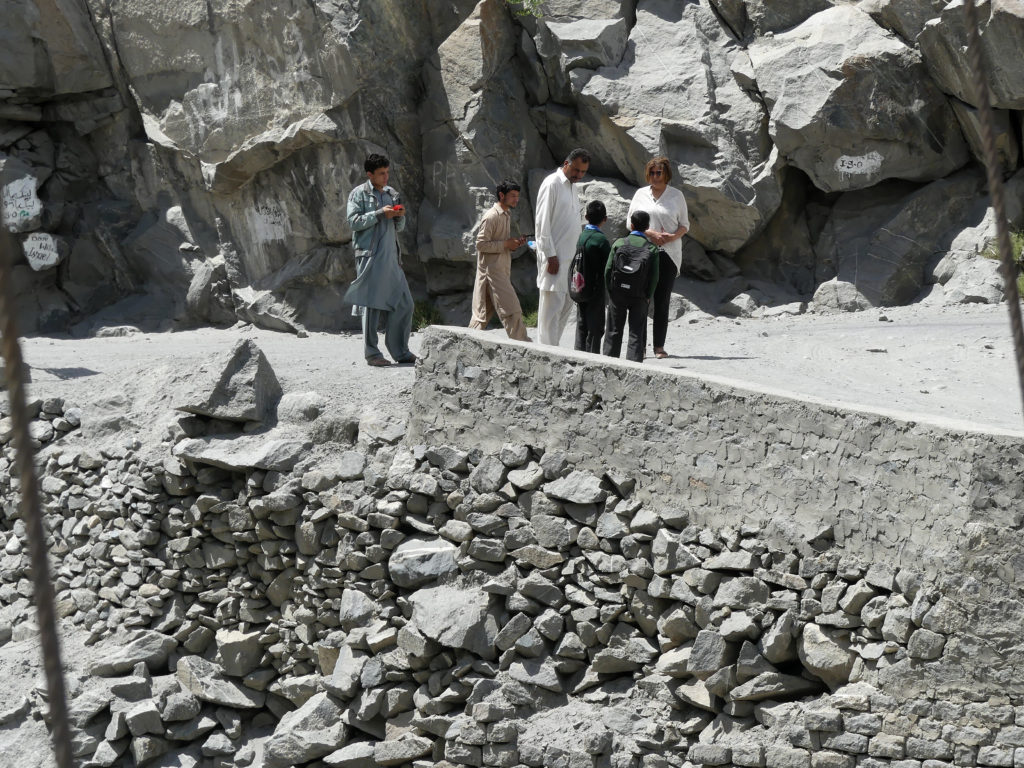
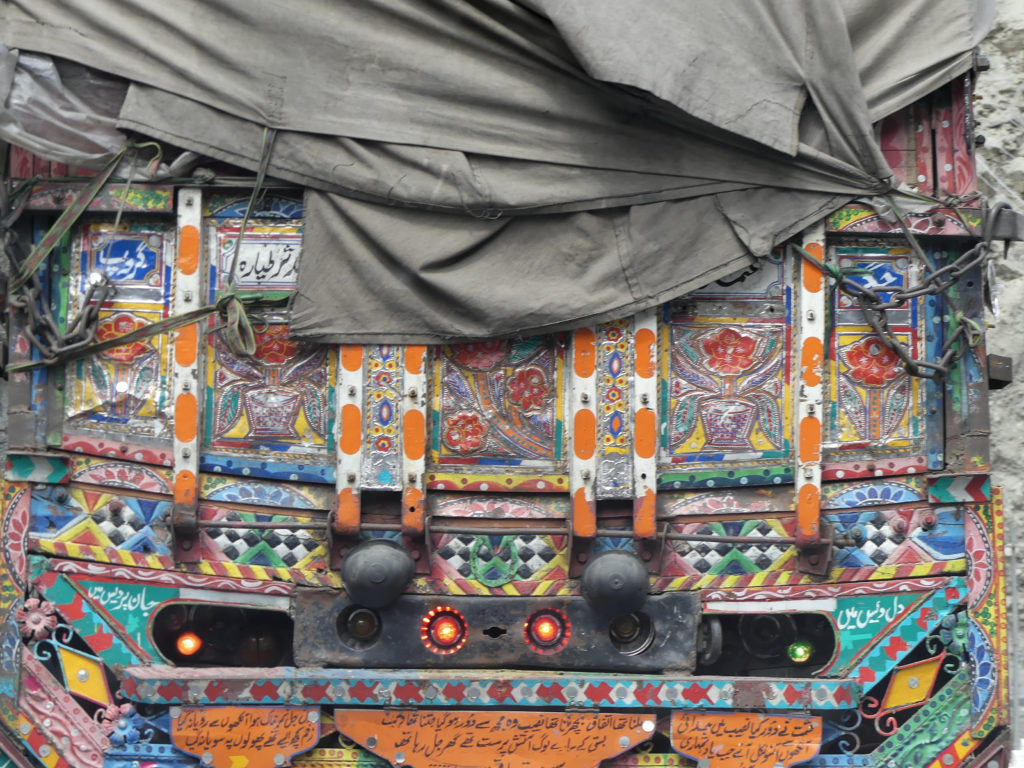
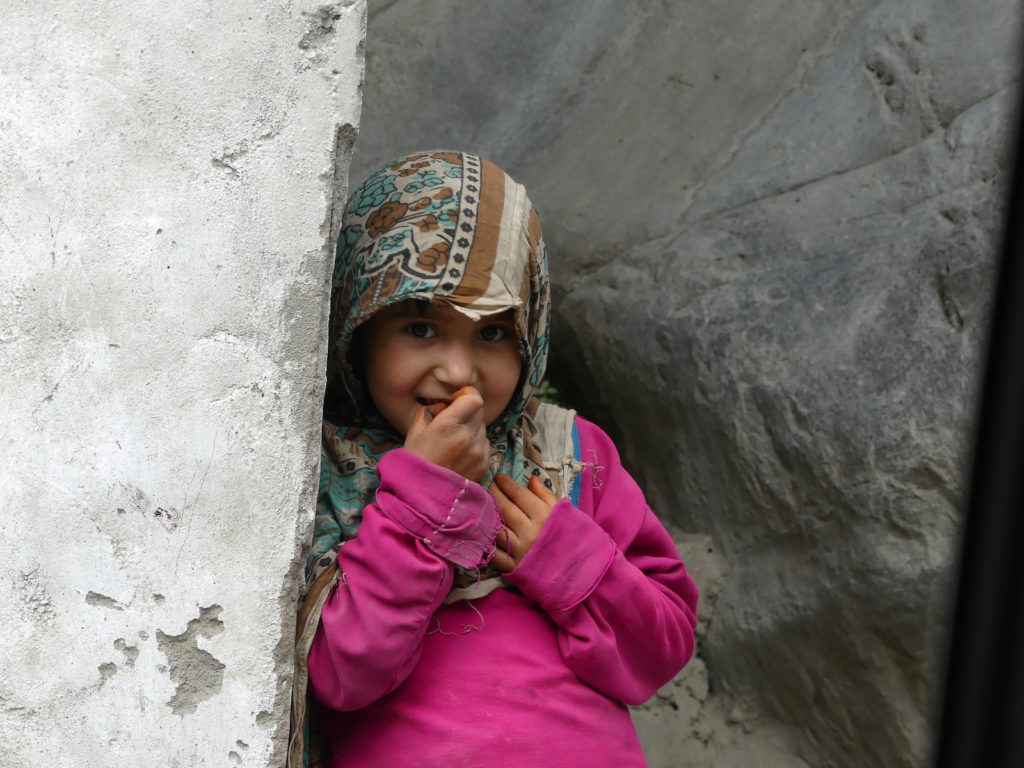
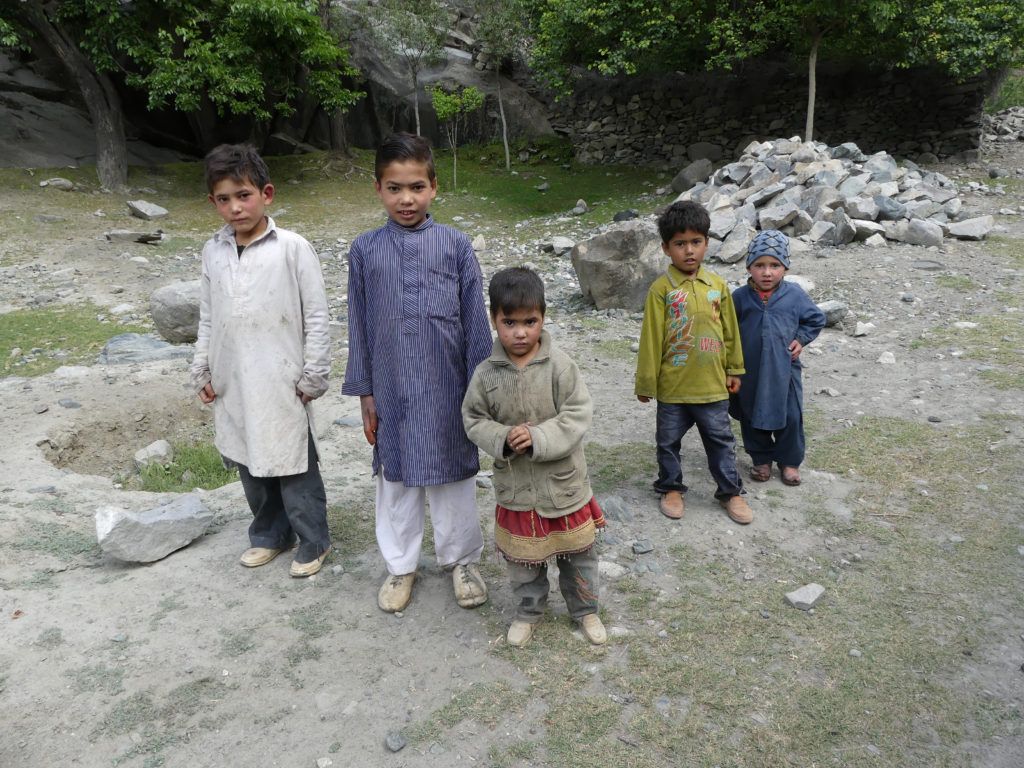
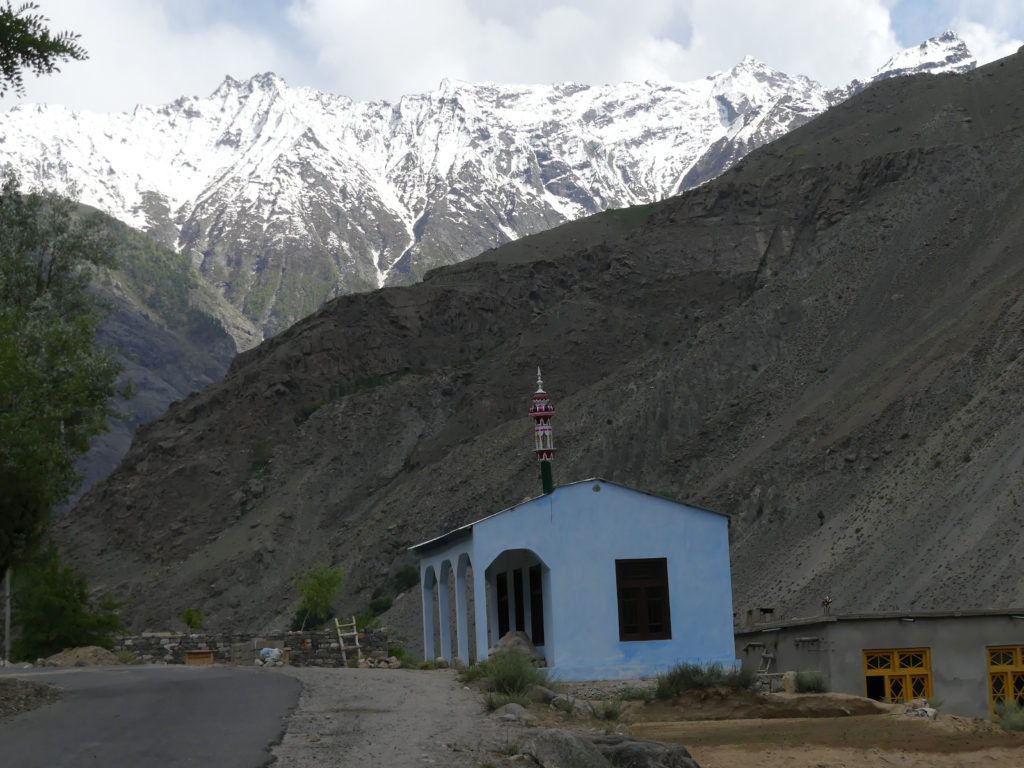
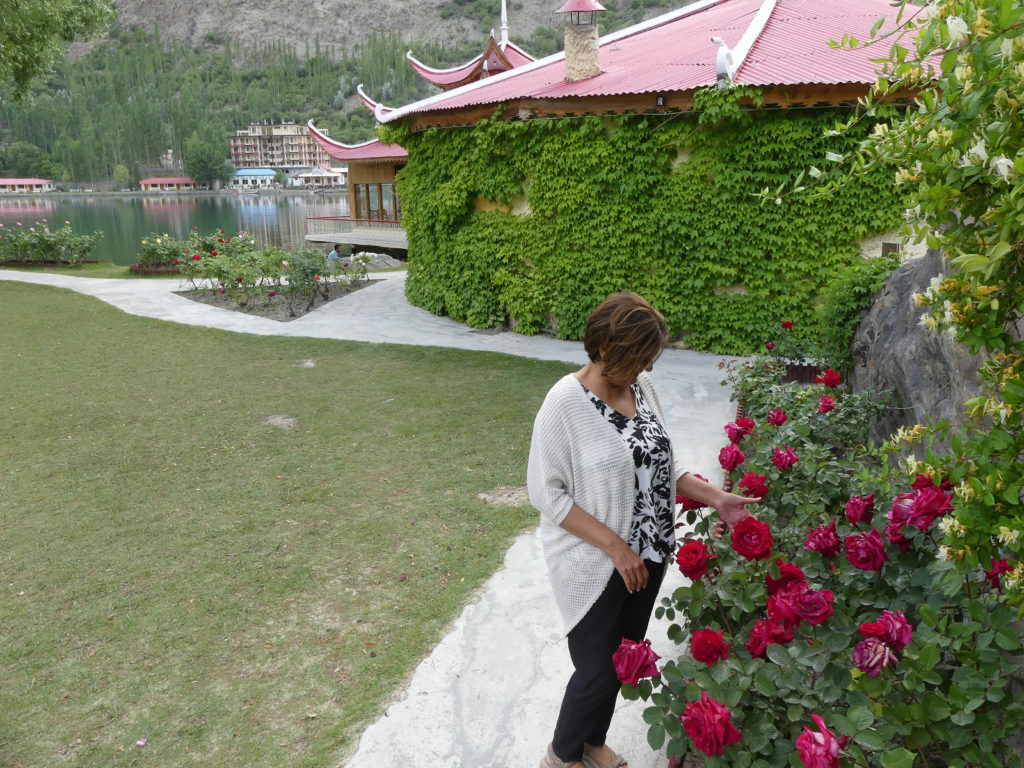
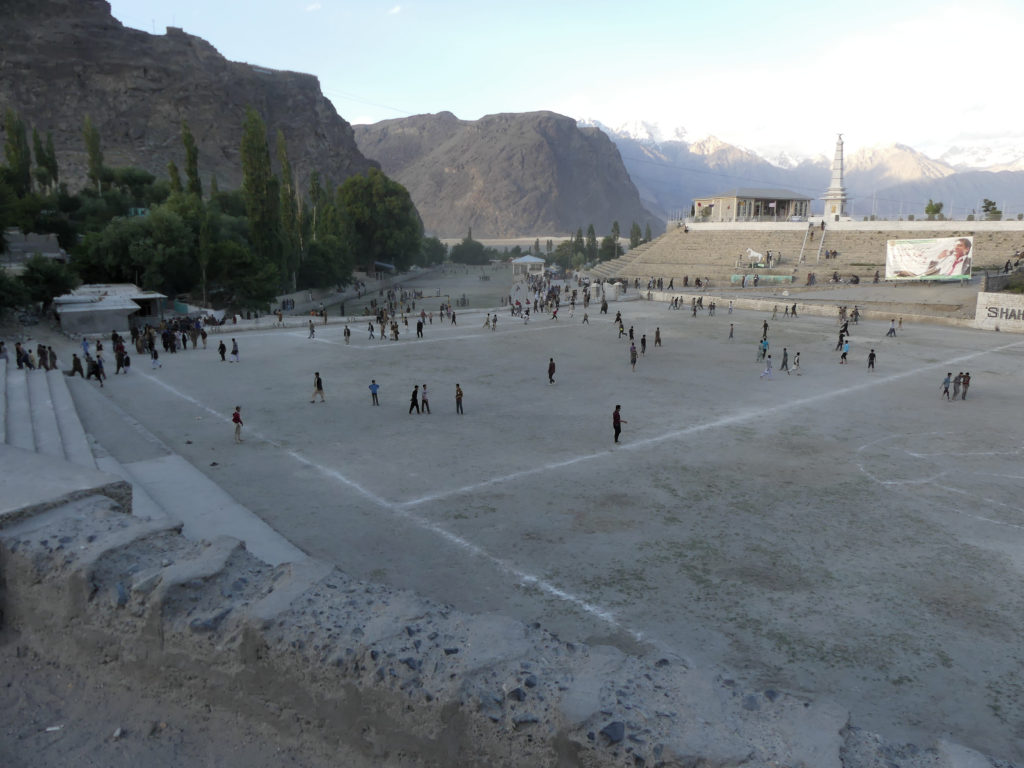
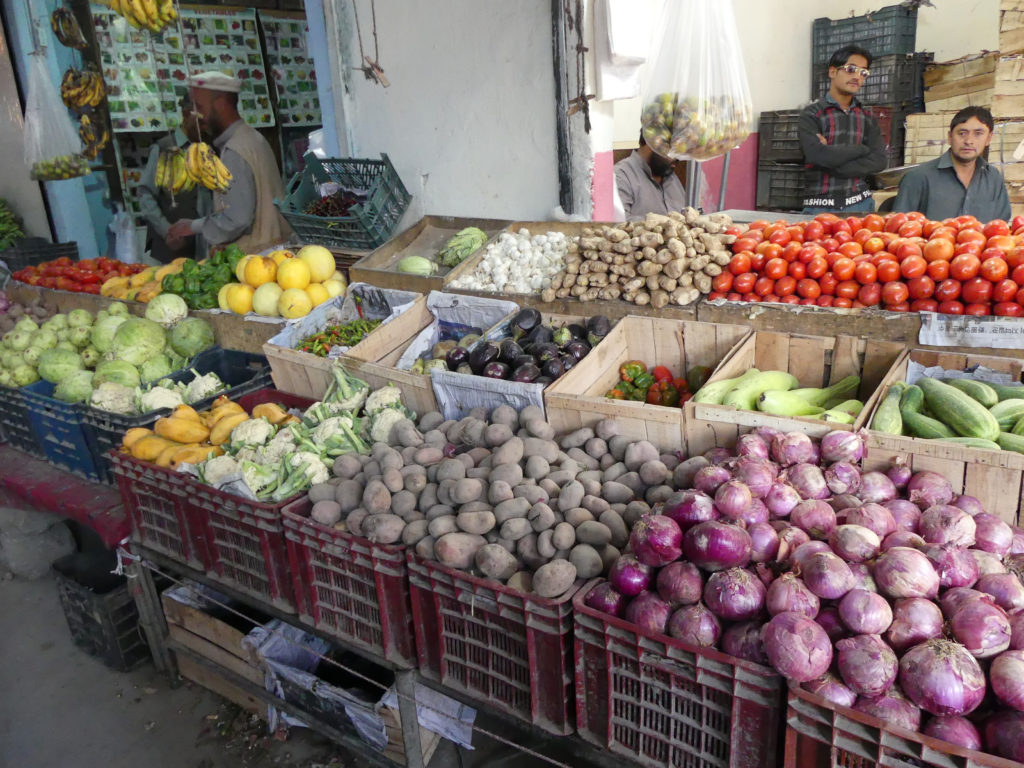
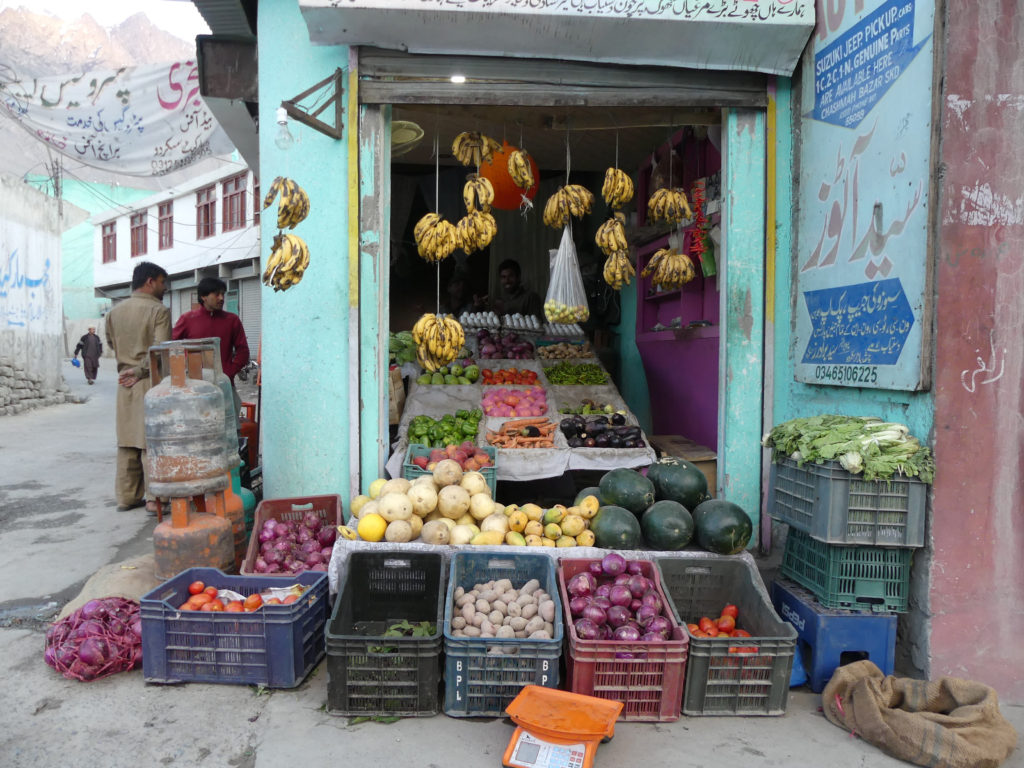
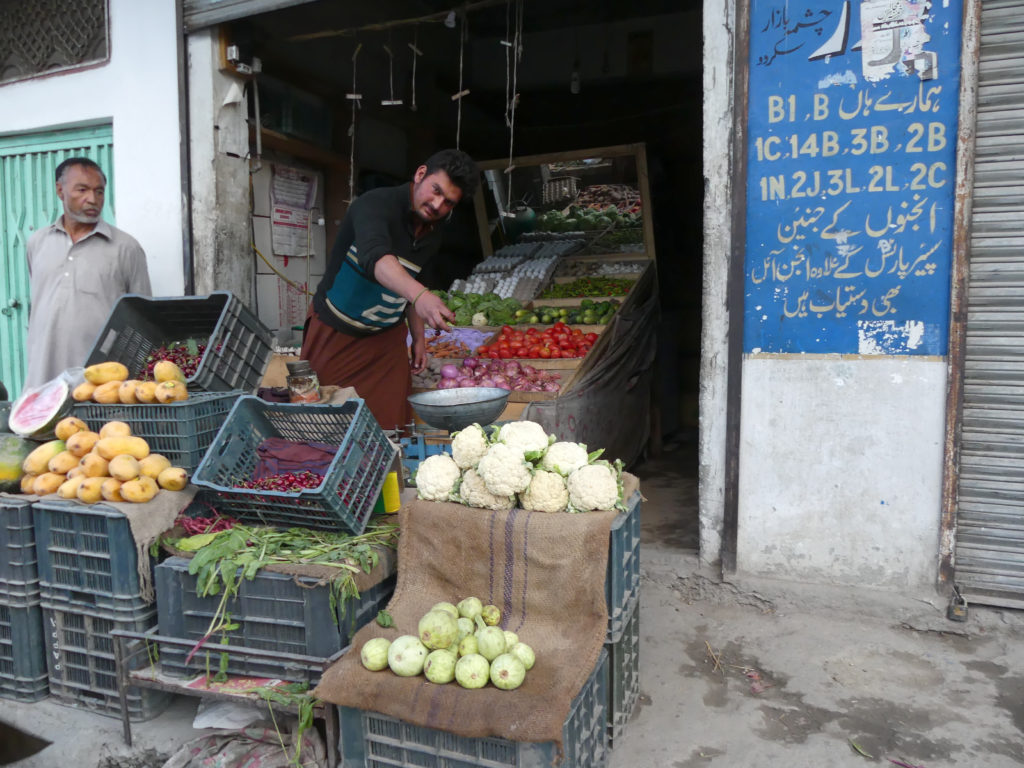
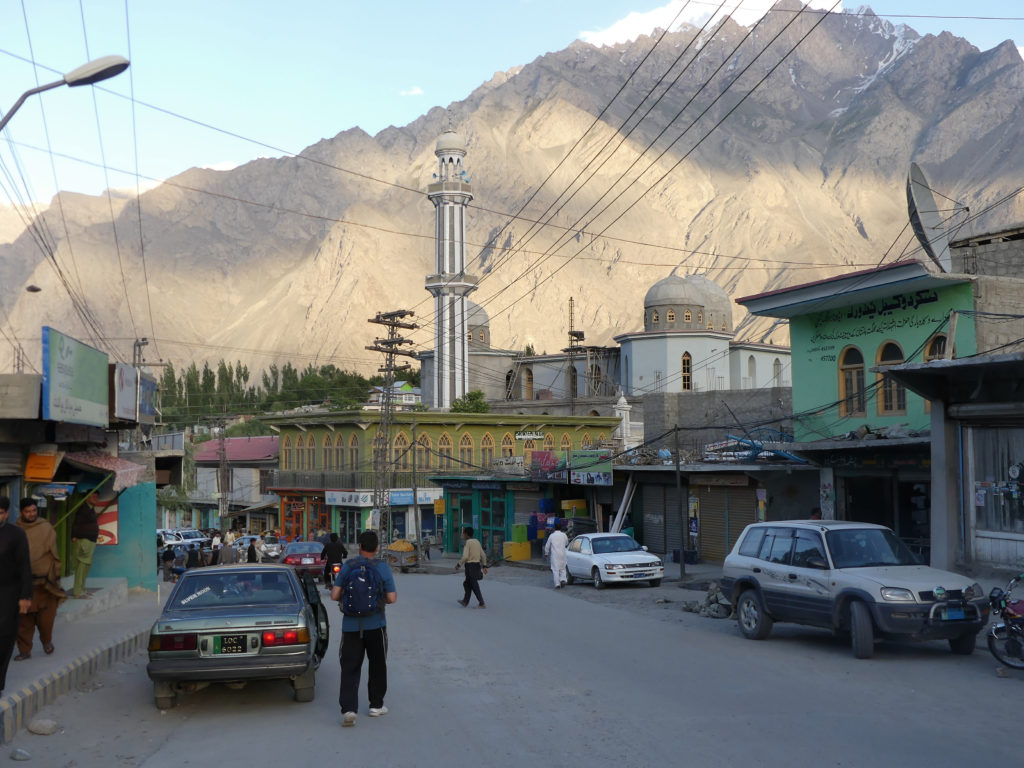
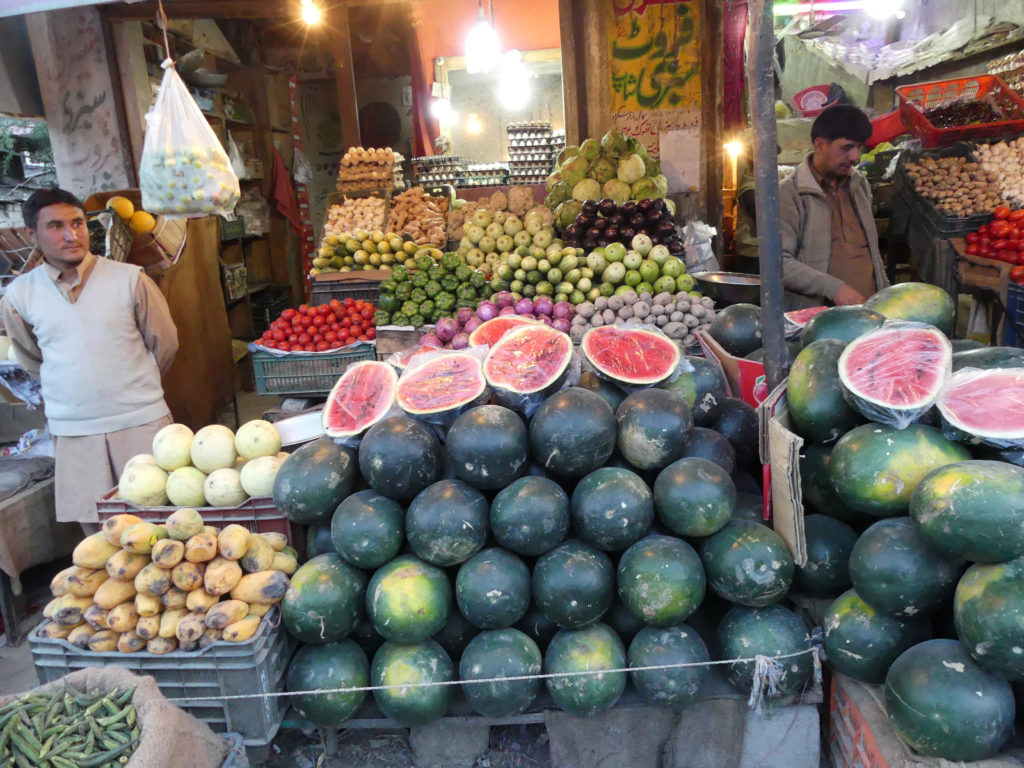
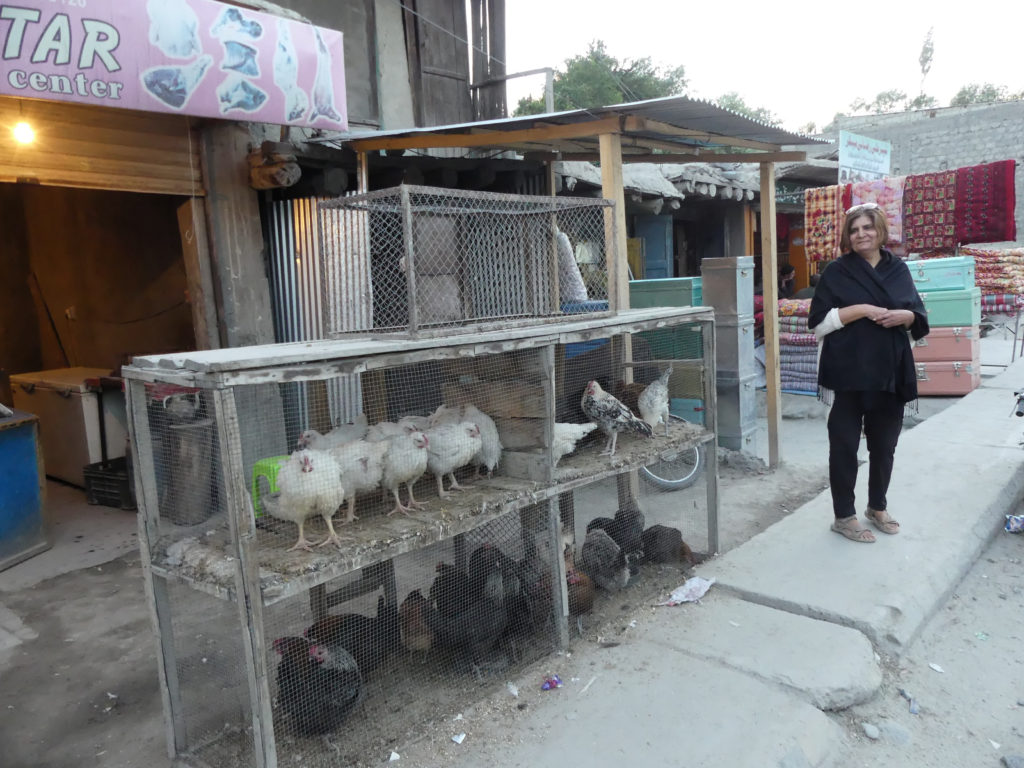

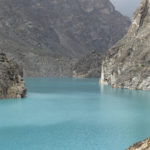
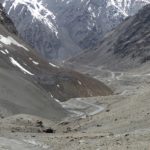
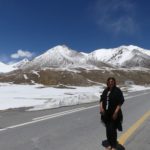
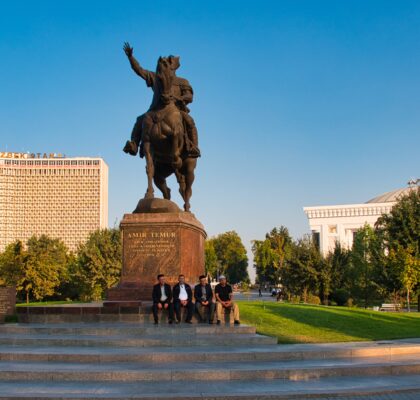
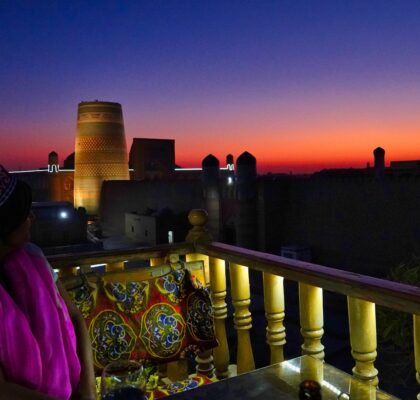
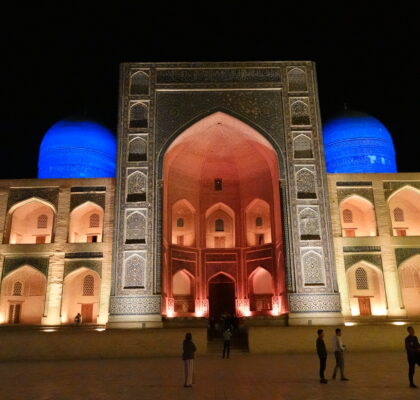
Pingback: Silk Road 14: Bishkek, Kyrgyzstan - Ali Karim Travelog Asia
Pingback: Silk Road 9: Karakorum Highway; Karimabad/Hunza, Pakistan - Ali Karim Travelog
Pingback: Silk Road 12 : Onto Shigar Fort and onwards - Ali Karim Travelog
Hello Ali,
I googled and came across your blog. I was interested in getting a flavor of Skardu..as I remembered, you and Dilshad had visited the town during your silk road travels.
I hv been re-reading your blog for last couple hrs. Have throughly enjoyed reading it again. You are a very skilled blogger!..as also mentioned by an earlier reader..and your excellent pictures hold their granularity very well when you expand them.
Reason for sudden interest in Skardu is that Noor very recently received an inquiry from a very old friend, from her days in Northern Pakistan, who now lives in Washington, DC. area..whether Noor could assist a very bright young girl, from Skardu, in her aspirations. Noor is now working on it..l hope she succeeds because last year we tried to help a bright young man from Tajikistan but so far we have not succeeded…
It was good to finally meet you and Dilshad for lunch in Dallas. Hope we meet again. Please do kindly convey our regards to Dilshad.
ps: Sorry for the long post!
With Kind Regards,
AmirT
Oh my heavens….you two are brave. Such a thrilling travelog you offer us here. I Just so enjoy your daring photos and random prayers to varios rocks to stay put!
HI Jane, thanks for reading my blog and I was so relieved when the rocks stayed put 🙂
We had to drive back this same road to get back to Gilgit, and we prayed a lot on the way back also 🙂 🙂
This blog is fantastic! As a “Westerner”, I find both your mature age and different ethnic background an absolute treasure of inspiration regarding traveling generally and the positive life lessons thereof in particular that you share, in no small part because bloggers are often privileged young Westerners.
And this sentiment couldn’t apply more to a write up about Pakistan.
Thanks so much for sharing…I will definitely be back to read more about your travels.
Safe journeys.
THanks so much for the nice compliments; it makes my day when one of my blogs is read and appreciated. Thanks so much for the kind words. Please check out my other blogs; I know you will find them interesting also. Let me know.
Hello There. I discovered your weblog using msn. This is a really smartly written article. I will be sure to bookmark it and come back to learn more about your travels. Thanks for the post. I’ll definitely return.
This is very interesting, You’re a very skilled blogger.
I’ve joined your rss feed and look forward to seeking more of your great post.
Also, I’ve shared your site in my social networks!
Hi Kandi, thanks so much for the nice comment and for sharing my travelog in your Social Networks. So glad you enjoyed my travel blog through Hunza and Gilgit, Skardu, etc in northern Pakistan. Gilgit-Baltistan province is truly beautiful